Here & Now | Interview | “What You See Is What You Are”
Here & Now initially formed in 1974 and were an integral part of the UK Free Festivals movement through the 1970s.
Members were known for their communal living, freely giving their services to associated groups, e.g. Legalise Cannabis Campaign, Stonehenge Festival, BIT, Release and others. For many years they never charged an admission fee to their gigs, instead asking for voluntary contributions towards their costs via an organised collection at each event. In 1977 they joined Daevid Allen and Gilli Smyth to become Planet Gong and released their first vinyl album. They reverted to Here & Now in 1978 after Daevid Allen and Gilli Smyth left for the USA. The first version of the group was co-founded in London by drummer/vocalist Keith Dobson, guitarist/keyboardist José Gross, bassist Franco and others in March 1974. By 1975 the line-up featured Dobson/Kif Kif Le Batteur (drums/vocals), Steffe Sharpstrings (guitar), Paul “Twink” Noble (synths) and Keith Tha Missile (bass).
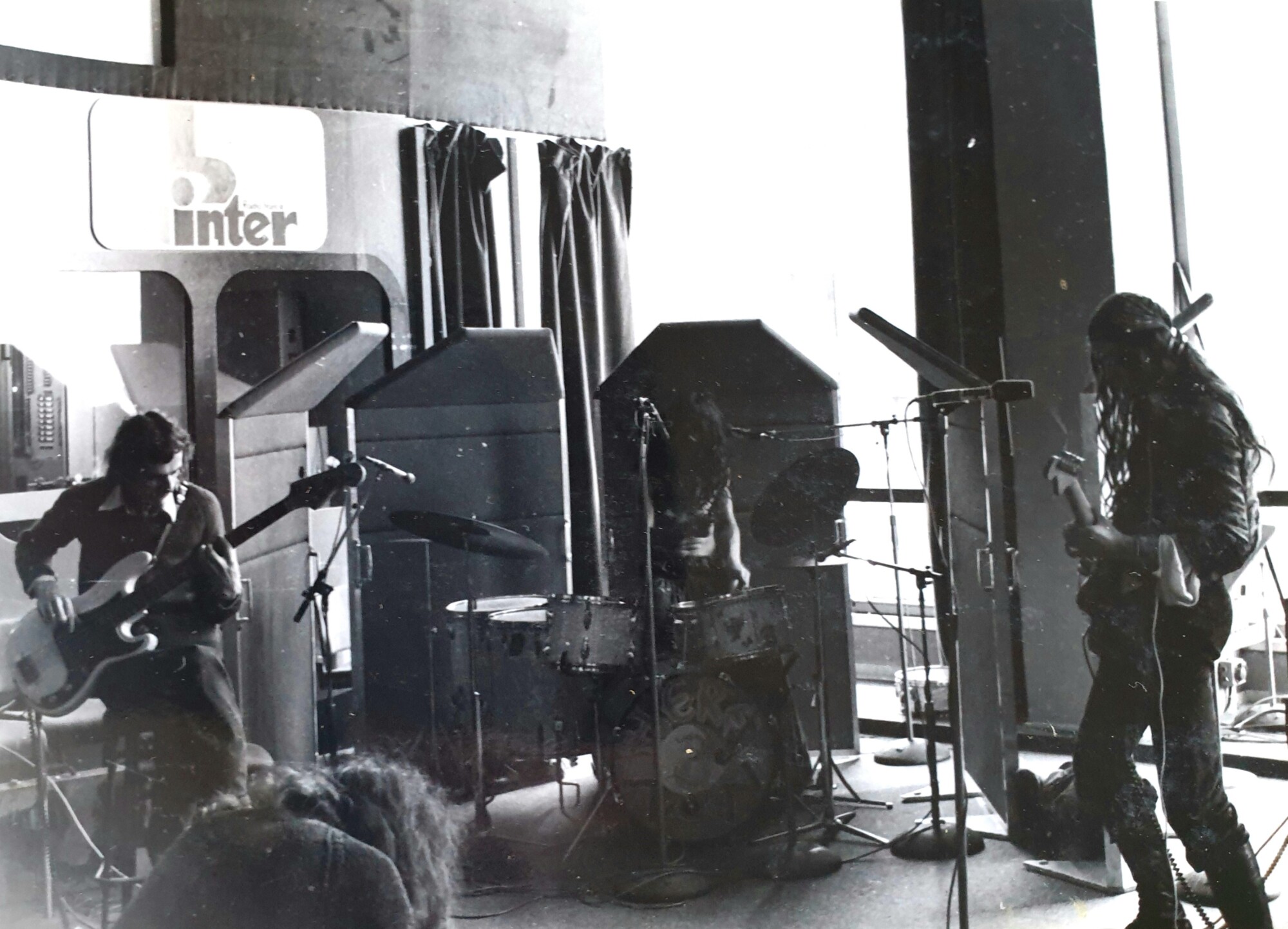
“It seemed that music was the only thing that offered any sort of new vision to lead us out of that grey, grim world”
Would you like to talk about growing up? What was the local scene there? What are some of the most important early influences for you?
Keith Bailey [Keith Tha Missile]: I was born in the 50’s, in Southampton, southern England, and as Roger Daltrey once said, “everything was in black and white then” – and it did feel like that – Britain – along with the rest of Europe – was still picking up the pieces after World War II, so there were still bomb craters everywhere – skeletons of houses, looking like broken teeth – and there was still rationing in force, too… Our parents were, I think, still frozen inside after that horrific time, and indeed, some of them never thawed out. There was still the rigid discipline born of long passed empire days, too, and like a lot of kids, I was a rebel without a clue – I just instinctively rebelled without knowing why – and it seemed that music was the only thing that offered any sort of new vision to lead us out of that grey, grim world… Not that there was much of it about – the best thing on the radio at the time for us kids was Children’s Favourites with Uncle Mac, on the BBC light programme on Saturday mornings, and the best music I can remember on that was Lonnie Donegan, who introduced skiffle to the country, and planted the first seeds of what was to come… I was lucky, though, because I had an uncle who was in the merchant navy, doing the Southampton to New York crossings, and by the time I was about ten, he started bringing back all this American rock ‘n’ roll – this was when our best hopes were pinned on Tommy Steel or Cliff Richard and The Shadows – both pale imitations of what was coming out of the States by then… I remember being totally electrified by a group called The Ventures – who quite simply blew The Shadows away – Little Richard and Chuck Berry were lighting up my young life, too… Little did I know what was to come…
Was there a certain moment when you knew this was it and you picked an instrument and never stopped?
When I first heard rock ‘n’ roll, at about the age of 10 or 11, it was the drums that fascinated me – I learnt to keep the four to the bar with my right hand – the basic hi-hat beat – while doing the snare with my left, by pounding an armchair with knitting needles! But in the mid sixties, I decided I was going to be a guitarist – and got my first (acoustic) guitar at the age of 14… Then I got my first electric guitar – a Futurama – about 18 months later – formed a band at school, and begged, borrowed and stole amplifiers… We played one gig – a tennis club dance – and then broke up… At the age of 17, I was still at school, in Winchester, Hampshire, but hanging out with “proper” musicians in my spare time, who were all in soul bands, doing US Air Force and army bases in Germany, when one of them mentioned that their bass player had just left, and they were looking for a replacement… I promptly lied and said I was a bass player, and they offered me an audition, so I swapped my awful guitar for an equally awful bass – a Vox Clubman, and started to learn bass-playing… And that was the magic moment. I just knew, instantly, that this was my instrument – I instinctively understood, from the moment I started playing it, about the dynamics of it, and how to get it in tight with the drummer’s kick drum, and it just filled me with joy and inspired me from that moment onwards… The soul band I was supposed to be joining broke up about a month later, but the drummer, guitarist and singer carried on, and asked me to join to form a Cream style three piece with a singer tacked on, and that was it… I’ve been a bass player ever since…
Were you in any bands in the late 60s/early 70s? Did you record anything or maybe there are unreleased recordings somewhere?
After I’d left school and home to join the three-piece band – as it became after the singer had left to try his luck in London – we were just rehearsing in the basement of Winchester’s YMCA building, without any success at finding gigs anywhere, I was approached by the first drummer of the 3 piece – who’d left to join a band known as The Hearts Of Oak (!), who had a residency at one of the hundreds of “Britain’s oldest pubs” – called the Royal Oak – where they played for 5 hours every Friday and Saturday night… Their bass player had just left, and he asked me to come and audition, as he’d really enjoyed playing with me in the 3 piece. I got the job, and my real musical apprenticeship began. The band leader was called Jasper, and he was a truly gifted musician – one of those rare individuals who could get a tune out of any instrument within 5 minutes – but his forté was guitar and keyboards – both of which he could play in any style you could think of. So I learnt a lot from him, and am grateful to this day for everything he taught me. He went on to become a Fellow of the Royal College of Music, so that shows how accomplished he truly was. Unfortunately, there are no recordings in existence of that band, although our reputation was spreading far and wide attracting the interest of agents and A and R men from London… However, by early 1971, I was run out of Winchester town by the local drug squad – for reasons that I’ll leave to your imagination – and took a job and a bed-sit in Richmond, London, and for 3 months commuted to Winchester every Friday night for the gigs… That arrangement didn’t work out too well, so I regretfully took my leave…
For the next four years, I drifted through a few different jobs and a couple of bands – the most notable of which played their only live performance at the second Windsor Free Festival – we called ourselves Bliss, and the set we played there sparked off a riot – but that’s another story! Then in 1975, I joined Here & Now, and I’ve been there ever since…
Would you like to take us back in time and tell us what kind of records would we find in your teenage room?
Hitting my teens in the 60’s was incredible – I was growing up with The Beatles, The Rolling Stones, The Who, The Kinks, The Small Faces, Led Zeppelin and of course, Jimi Hendrix – to name but a few – it seemed like every day, an amazing thing happened in the world of music, the like of which had never been heard before, and which blew my mind in a wonderful way… The first record I bought was ‘Beatles For Sale’ – I’d saved up my pocket money for months to get that! I still remember how my hands were shaking with excitement when I put it on my Dansette record player for the first time… But from that time on, all my money went on records… But the one that really imprinted me, and made me realise that I wanted to play psychedelic music was Jimi Hendrix’s ‘Electric Ladyland’ – I had the first two albums of his, but that was the one for me… I still think it’s one of the best albums of all time – but the track that really opened me up – and it still does – was ‘1983… (A Merman I Should Turn to Be)’ although the LP that most influenced me as a bass player has to be The Who, ‘Live at Leeds’… I spent months trying to learn John Entwistle’s bass lines!
When did you first hear about Gong?
I think I was about 19-20 when I first heard ‘Camembert Electric’ – just as a lot of us were also discovering the wonders of LSD, incidentally – and I liked it a lot, but the album of theirs that really opened me up was ‘Radio Gnome Invisible’… That one triggered a kind of spiritual awakening – my flatmate at the time was a guy called Twig, who had been a roadie for Hawkwind, where he met Tim Blake, who was also one of their roadies at the time, so I got to meet him before he joined Gong, and he brought a copy of ‘Radio Gnome Invisible’ round to our place – just after he’d joined the band… so we all took acid and listened to it 5 or 6 times! Shortly after that, he got us backstage passes to go and see them, so I first met Daevid Allen and the band in about 1972… But that, too, is another story!
“An idea for a space-punk version of Gong”
Can you elaborate on the original formation of Here & Now and how Daevid Allen and Gilli Smyth of Gong teamed up with members?
The very first version of Here & Now came about in 1973/4 and broke up in 1974, leaving Kif Kif le Batter, the drummer, and Twink – NOT the one from The Pink Fairies, but an electrician who had built his own synthesizer – to carry the name forward with a guy known as Alan Dog-end on guitar, and another guitarist whose name escapes me now… In one of those classic moments of serendipity – or cosmic fate if you prefer – my then girlfriend and I were hitch-hiking down from London to Stonehenge in June 1975, and a guy who’d picked us up stopped to pick up another hitch-hiker, who introduced himself as Twink, and told us he was in a band called Here & Now, adding that they were looking for a bass player, and did we know of anyone? I felt a cosmic cog turning as I said that I was a bass player, and currently looking for a band… It was an amazing coincidence, really, looking back on it! Anyway, I was introduced to Kif Kif at what was then a very small Stonehenge festival, and he and I got on ok, and yeah, would I like to join the band? So that was the beginning of what has been a very long story indeed… We met at a couple of other small festivals, but didn’t actually play onstage together until early September that year, at a thing called Watchfield Free Festival – organised by a festival legend called Sid Rawles, who had been given an old RAF airfield as a site, and a government grant to set it up… It was pretty big – about 20,000 people, and had 5 stages… We managed to hustle an afternoon spot on Thursday afternoon on one of the smaller stages, and we just went on and jammed – which was what we did in those days – and it was pretty good – in fact it was incredible the way Kif-Kif and I clicked instantly as a rhythm section – we had an almost telepathic understanding of each other’s playing right from the start… The only fly in the ointment was the 2 guitarists, who were more suited to straight-ahead rock than KK and I’s more syncopated, free form style. But the audience seemed to like it – there were maybe 100 people watching when we started, but about 1,000 by the time we had to stop, one of whom was the stage manager of the smallest stage on site, and he came up afterwards and asked if we’d like to play the Friday night closing set on his stage. Of course we said yes, and we kicked off at about 9-10 that night… Again, there were only about 100 people there when we started, but again, the crowd built up really quickly – after an hour it had mushroomed to about 3-4,000, and as they say, the joint was rockin’! I looked round at one point, to see Stevie Winwood, who was playing the main stage on Saturday night, and had come down to check things out, dancing like no-one was watching at the back of the stage – things were beginning to look star-crossed! We played till about 2am that night, and when we finished, the stage manager came over to thank us, and offer us the closing set on Sunday night, then said that Steve Winwood had said he didn’t want to play the main stage on Saturday, and could he play this one instead? “It’s the best vibe here” he’d said… And despite the small PA, and rudimentary lighting rig, that’s what he did! Soooo… KK and I were wandering about the following day, when we heard this amazing guitar wafting out of a tent… we looked at each other, and went straight over and opened the flap, and there was this guy with a little battery powered amp, riffing away for dear life… He said “Oh! Hello! I saw you playing last night – really good! I loved it!” We told him about the Sunday night slot, and would he like to come on and jam? He said yes, he’d love to, and so we’d found Steffe Sharpstrings… Funny thing is, we’d started a bit earlier than planned on Sunday night, because Arthur Brown – who’d also decided to play on that little stage – hadn’t turned up, so Steffe only arrived after about half an hour. He set up and started to play, and it was an instant melting together of him, Kif-Kif, Twink and I – it just went click… WHAM! Within 10 minutes, the other two guitarists just quietly disappeared, and the classic 4 piece line-up of Here & Now was born… Half an hour later, Arthur Brown turned up and leapt onstage, improvising lyrics and poetry with us for about an hour, then left… Steve Winwood and his percussionist, Rebop Kwaku Ba were again at the back of the stage, and a very drunk Viv Stanshall was trying to get up too, when I suddenly had an out of body experience – in front of 5000 people! And an even weirder thing is that Rebop was looking up at me, 20 ft above my body – which, miraculously, and perhaps even more weirdly, was still playing – and, as if he were talking next to me, I heard him say “OK, I’ll play with you” – and he brought a pair of congas on, set them up next to me, and we played and played all night – didn’t stop til sunrise – and the crowd stayed with us all night, too… A star-crossed beginning indeed!
So – as if I hadn’t bored you to death already – the way we got together with Daevid – Gilli didn’t come along until halfway through the UK leg of the Planet Gong tour, due to family duties – was that he (Daevid) had mentioned to Mike Howlett – the bass player with the previous incarnation of Gong – that he was developing an idea for a space-punk version of Gong, and it just so happened that Mike had heard about us, and had come to check us out at a gig near Portobello rd., and – he later told me – he’d really enjoyed it, so he mentioned us to Daevid… By coincidence – or perhaps another force was at work – we’d made a very rough cassette tape (in a garden shed somewhere in Notting Hill), and the then synth player, Twink, was in the queue for a snack in Ceres bakery on Portobello road, when he saw Daevid, also in the queue, and struck up conversation with him, told him about Here & Now, and gave him a copy of the cassette… Daevid listened to it, and got in touch, and we met in a pub, where he said he’d arrange a gig so he could come and jam with us – try things out, and see how it went. We met up at Oxford Poly – a small college gig – and he played with us, and thought it could be made to work… the rest is history…
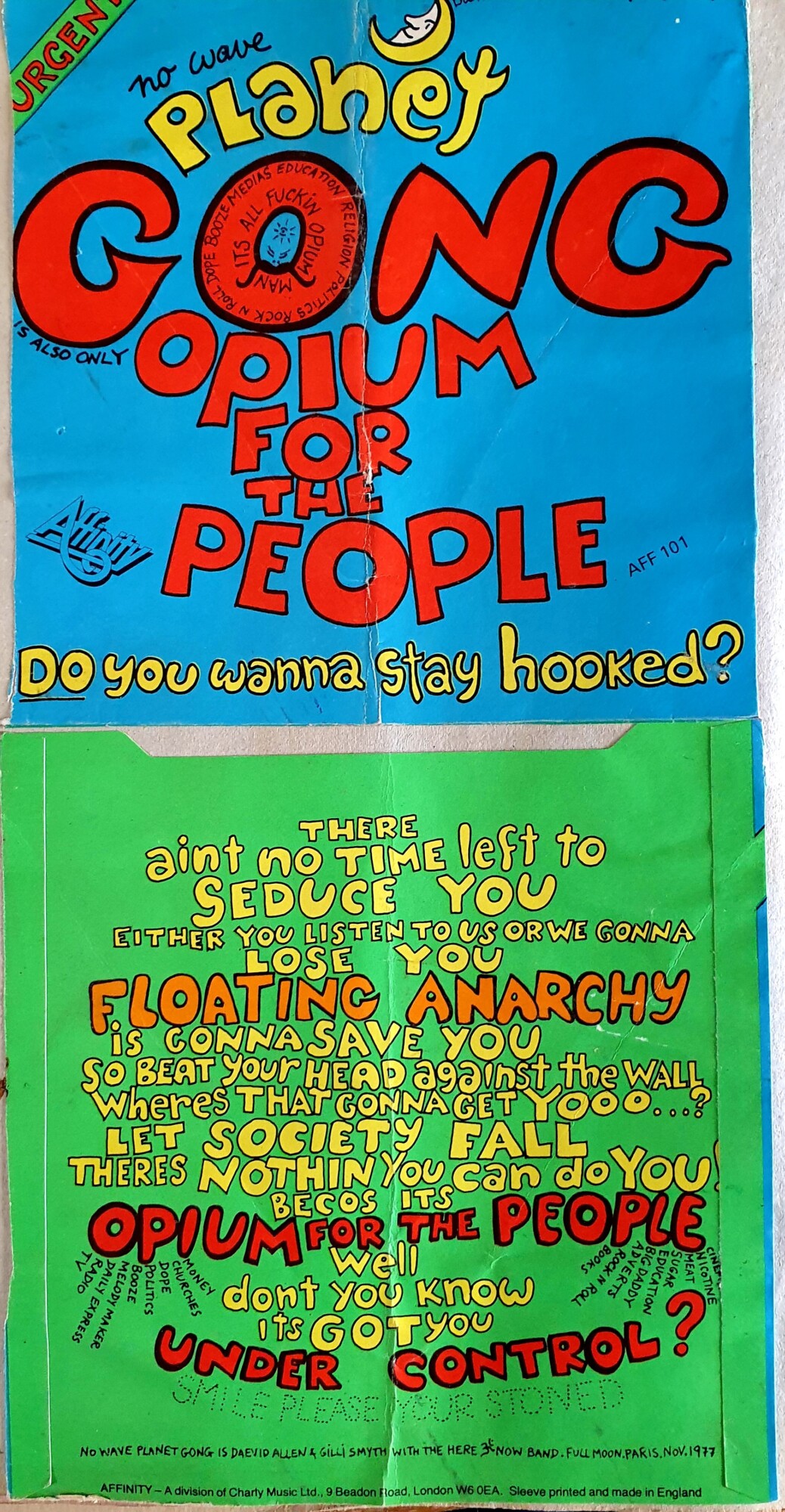
Did Here & Now play a lot of gigs at the beginning? What kind of clubs did you play and what kind of material did you play early on?
After the classic line-up had formed, we spent some time just jamming in that garden shed, and working up riffs and a few basic song ideas, which we used as platforms for extended improvisations, then started looking for gigs… We were also working out the philosophy behind what we were doing, which led to us agreeing to play free gigs wherever possible, or charging the lowest feasible entrance fee we could, and avoiding the standard industrial model of signing to a label and becoming another product on the conveyor belt… So we tended to play alternative venues, which were more inclined to understand our approach… But such gigs were few and far between in those days, and while I didn’t actually say I was leaving, I started gigging with another band – more to keep my hand in than anything else. The band recruited another bass player to fill in, but Kif-Kif came to see me six months later to say that they were planning on going to France and basically electrically busking anywhere that could be found, and would I like to do it? So that’s what we did, in a bus that Twink had bought, and equipped with our backline amps, a small vocal PA and a Gestetner mobile printing machine for printing up flyers… We set off in September and didn’t come back until the following February, during which time we went from days of starvation and desperation, to a gig somewhere, then back to starvation, and finally to playing five nights at the Parisian equivalent of London’s Marquee club – called Le Club Gibbus – followed by a nationwide broadcast on Radio France, then two nights at Theatre Paris Nord, before finally returning to the UK… After that, we played a few sporadic dates here and there, then met up with Daevid Allen… The set in those days was mostly improvisations around a few basic riffs and songs, and could last anything between forty five minutes and five hours!
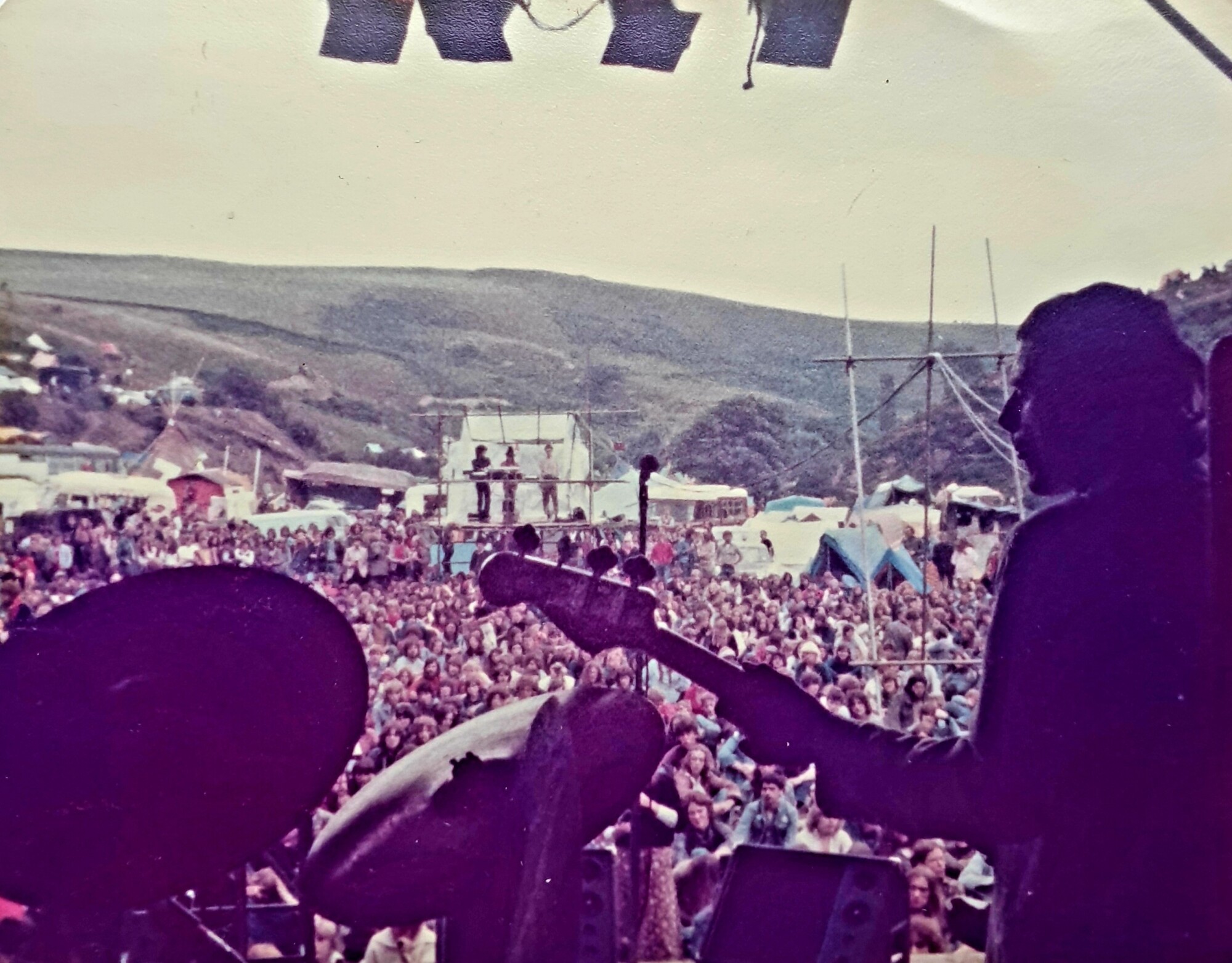
What was it like to play many live gigs as Planet Gong? What were some of the bands you played with?
The Planet Gong ‘Live Floating Anarchy Tour’ of 1977 was the first organised professional tour we’d ever done, and it was pretty hectic, to say the least – the bus broke down twice – once in the UK and once, more terminally, in France, which made things more difficult! We played about 12 shows in the UK, and maybe 14 in France.
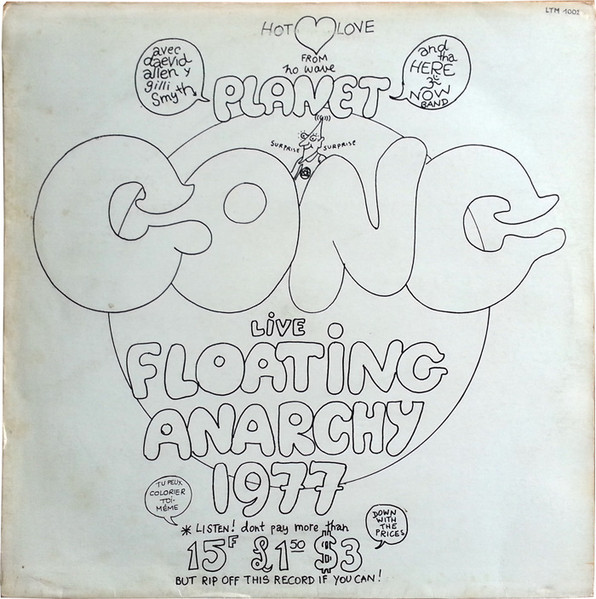
When we started the UK tour, we were playing about a 90 minute set, but by the time we were halfway through the French leg of the tour, that had stretched to about two and a half hours… It was a steep learning curve for us, but very exciting – Daevid brought us to a more disciplined and structured approach, but – as with the previous incarnation of Gong – left plenty of room for improvising, too, so new ideas were coming up constantly… Daevid was never much of a one for having support bands, though, so apart from a massive one-day festival in Paris with Captain Beefheart – and that’s another story in its own right (!) – we didn’t have any support acts… It wasn’t til after that tour – when we were touring as Here & Now in our own right – that we had other bands on the bill – we did a co-headlining tour with ATV [Alternative TV] – a well known punk band at the time – then shows with Patrick Fitzgerald, a punk poet, then we gave The Fall their first gigs outside Manchester, then The Cardiacs their first gigs outside London, then RDF, The Astronauts, plus dozens of other bands… We even gave Duran Duran their first ever gig!
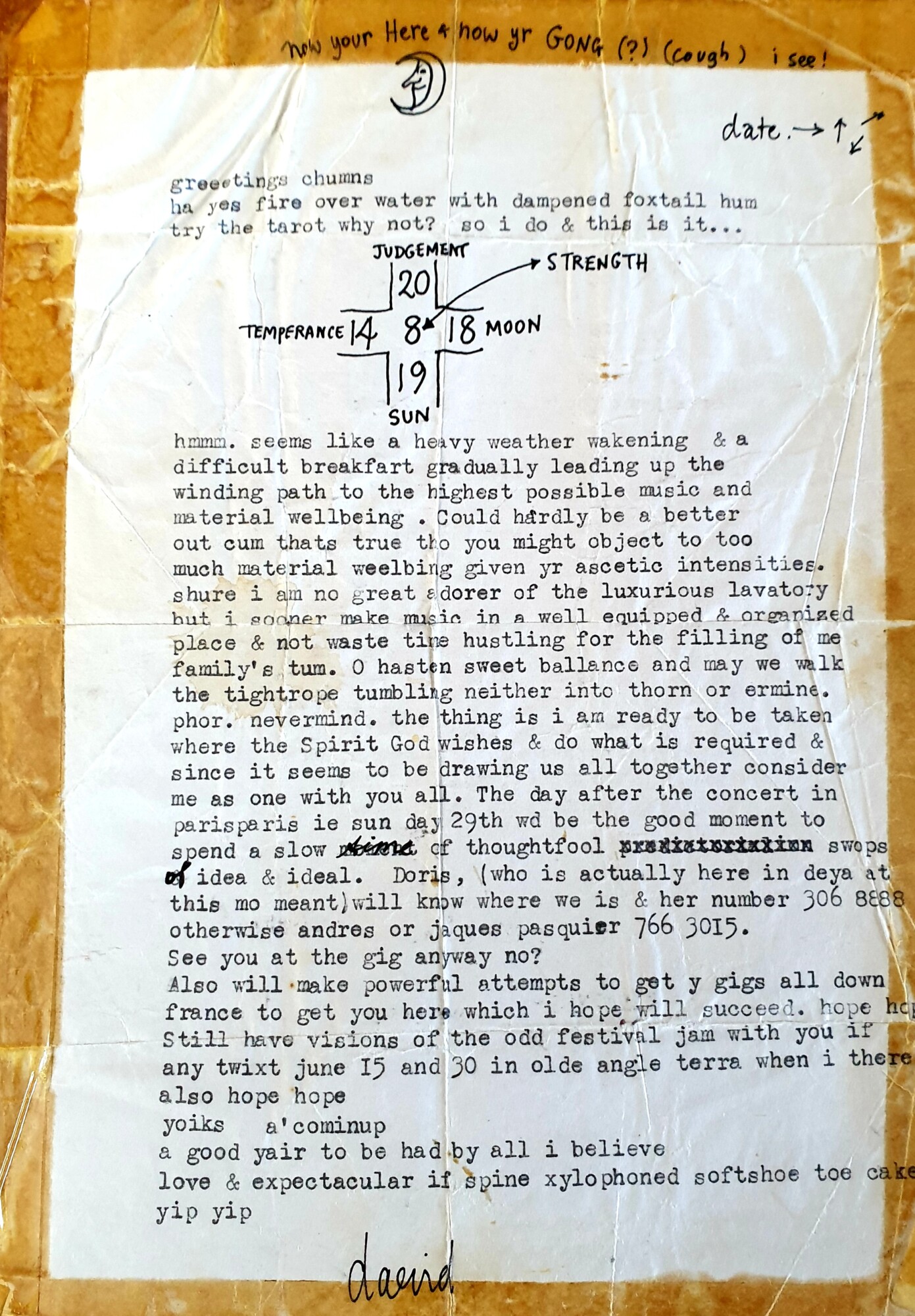
What’s your opinion about psychedelics? Did it have a big impact on you as a musician?
Psychedelics played a big part in my late teens and into my twenties – as they did for a lot of my contemporaries – it was all pretty chaotic at the time – nobody that I knew had any idea of setting up a peaceful, harmonious environment to take them in, so things got pretty hairy, sometimes! But they had a huge influence on both the music I listened to, and the way I wanted to play… They influenced every aspect of my consciousness, in fact – and while I wouldn’t recommend them for everyone, I would also say that they can bring about some very positive results – they certainly expanded my horizons – but they can also have very negative effects, too, so I can only speak for myself, of course…
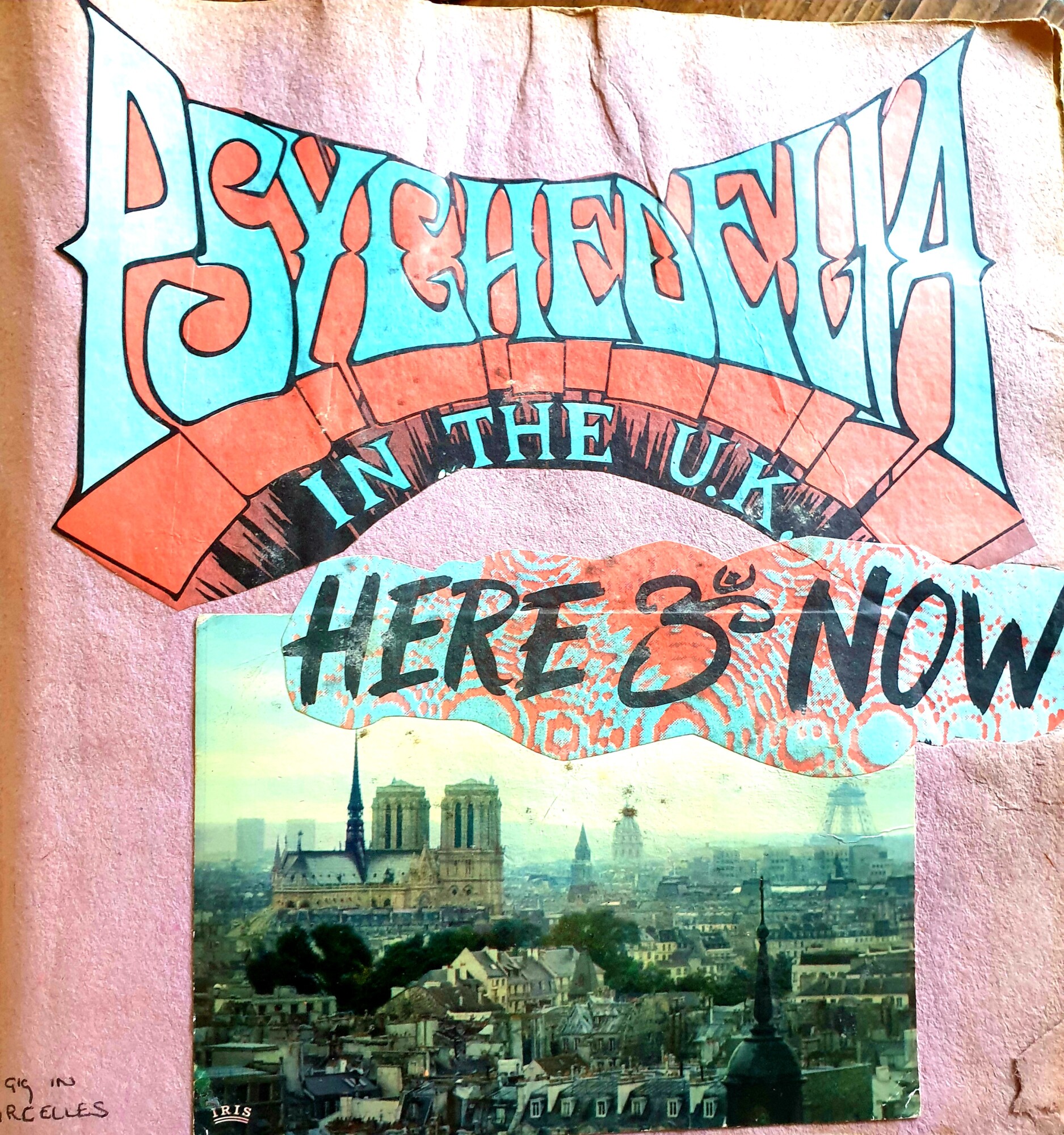
What would be the craziest story that happened to Planet Gong or/and Here & Now?
Brace yourself – here comes another long story – which, try as I might, I really shouldn’t cut short if I’m to do it any justice… So, I’ve chosen a Gong touring story – although there are enough Gong and Here & Now crazy tour stories to fill a book – but this one – well, I’ll leave it to you to decide… To put you in the picture, we’d just played a gig in Basel, Switzerland, and the next show was all the way over on the eastern side of Austria – in Linz, on the following night… Everybody in the band, with the exception of Pip Pyle and I, decided that the road trip would be way too long, so they decided to go by train. That left Pip, myself, and three roadies to take the long drive – which involved driving right across the Alps before a very long and very boring motorway journey across Austria to Linz. The show was an outdoor one – a one day festival – and we were due on at 8pm, to finish at the strict curfew time of 10pm, so we decided to give ourselves plenty of time to cross the Alps, and left the hotel in Basel at 7am. The drive across the Alps was spectacularly beautiful, but very slow, so we didn’t hit the flat part of the journey til about 1pm – which would have still left us plenty of time to make the show, we thought… Wrongly, as it turned out! The motorway was ok until it deviated into Germany, when we ran – for some strange reason – straight into a very long traffic jam… To cut an extremely long story slightly shorter, let’s just say we finally got to the show at 7:30pm – half an hour before we were due onstage… Of course, the rest of the band were in a state of – ahem – some agitation, having been waiting for us for six hours, but that gave us all a massive adrenalin lift, and we played a blinder of a set. We were booked in to the Linz Hilton that night, and we had the next day off – a rare event in a tightly scheduled tour – so with the exception of Daevid Allen and Gilli Smyth, all of us made our way down to the basement bar of the Hilton – which as the hotel was on an industrial estate, was the only bar around… The bar was horseshoe shaped, and sported a huge pyramid of champagne glasses as a centrepiece… there was a similar shaped seating area around the bar, fringed by five metre high palm trees in big pots, then stairs leading down to a big dancefloor area, which was packed with people dancing to some atrocious euro-disco, and there were about six security guys standing amongst the palm trees… I was sitting with Steffe – the guitarist, and Grahame, violinist/guitarist, having a few beers, while Pip Pyle and Neil, one of our crew, were at the bar knocking back Tequila slammers and chasing them with beers… I could see they were getting pretty wrecked, and eventually, the barman said “no more”, making a throat-cutting gesture then miming go to bed… Pip looked like he was pretty pissed off about this, and lo and behold! As soon as the barman’s back was turned, Pip bounced his shot glass off the bar and straight into the pyramid of champagne glasses… I’ve never heard anything like it in my life… KEERRRAAASSSHHH! The ear splitting sound of a thousand champagne glasses collapsing and shattering in one incredible, catastrophic moment that seemed to last for hours… Pip had ducked under the bar as soon as he’d thrown the glass, but he’d forgotten about the bouncers, who’d seen exactly what had happened and who did it, and we’re advancing rapidly on Pip… I leapt out of my chair and raced over to grab Pip and get him out of the bar before the bouncers got to him, but Pip, being totally drunk, and probably cross-eyed, thought I was a bouncer, and launched himself at me, fists flailing… Now I’m no judo expert, and I’ve never done anything like it before or since, but the whole scenario went into slow motion, and I instinctively turned, and somehow flipped him straight over my shoulder… It seemed I had all the time in the world to watch him cartwheel through the air and go crashing straight into one of the palm trees, which teetered, swayed, and finally went crashing into the packed dance floor below… How nobody was hurt, I’ll never know – maybe God looks after fools and drunks – but in the total chaos that followed, Neil and I grabbed an almost unconscious Pip and frog-marched him out of the bar and into a lift, mere seconds before the bouncers could get to him… You might think that would be the end of this mad little tale, but oh no… sorry – it gets worse…
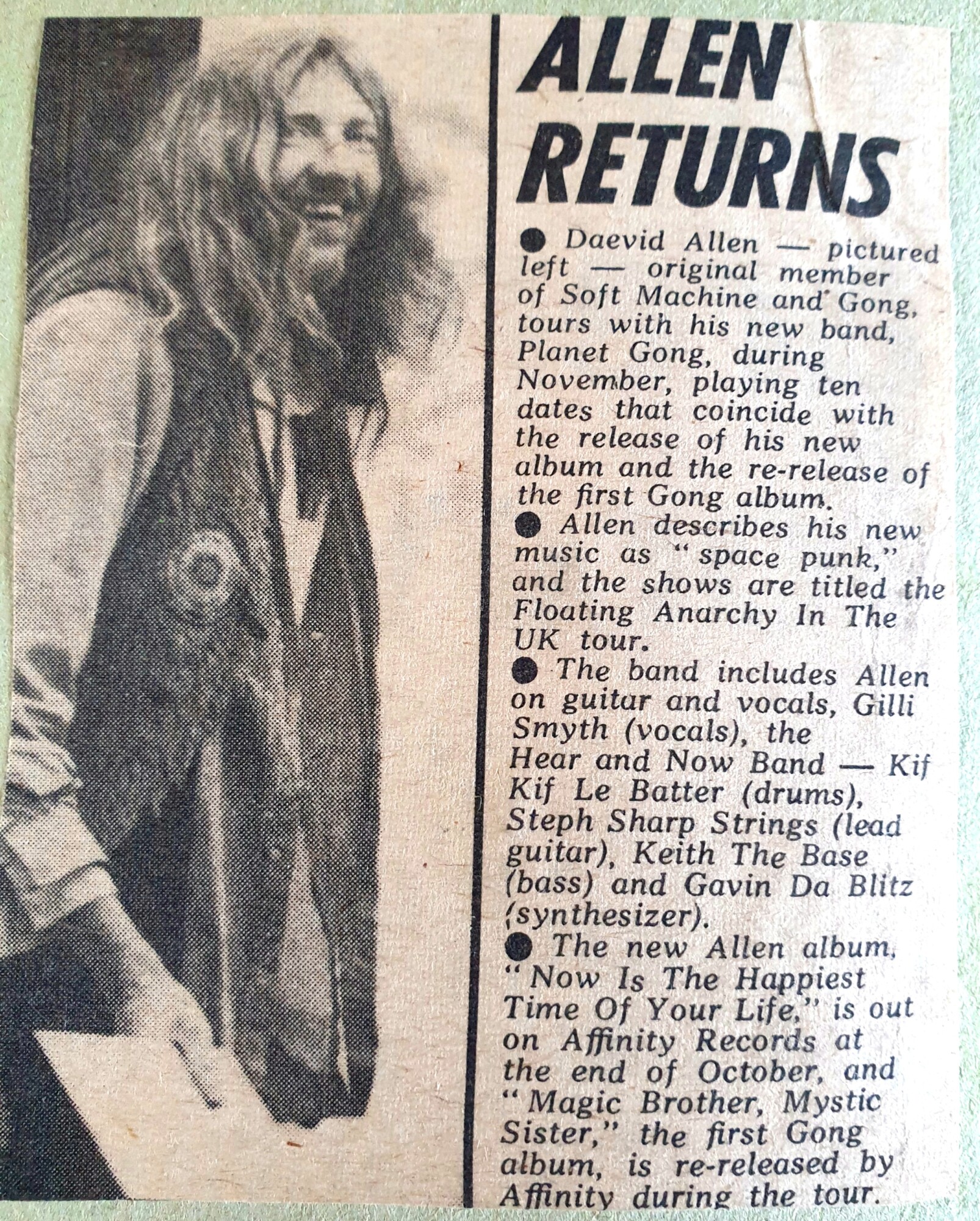
Sooo… we’re in the lift – three musos and three crew and, of course, Pip, who’s regained consciousness and is now completely crazed, thrashing about wildly at at all of us, but we somehow get him out at our floor, and drag him into Neil’s room, where we throw him on the bed, and it takes all six of us to hold him down… He eventually seems to calm down, but says he’ll only behave himself when he gets another drink. Somebody had the bright (???!!!) idea of getting a quarter bottle of whisky from the minibar, and very foolishly gives it to him… He downs it in one go, then says, very clearly and calmly, that he’s ok now, and can we get off him, as he needs the loo. We duly get off him, and he goes into the loo, locking it behind him, and there follows a minute or two of silence… Then, from behind the door comes an almighty crashing and smashing – like a demolition squad in a frenzy of destruction… It took us about five minutes to break into the loo, which was all it took Pip to do the dirty deed… The toilet was just a hole in the floor, the rest of it in splinters all over the floor, as was the sink – just the taps attached to the water pipes still standing, the mirror somehow still on the wall, but in a thousand shards of glass, and the walls decorated with GONG, written in big black letters a dozen times with the shoe polish sponge… And Pip, finally at peace, sitting on a pile of toilet rolls in the shower, with the water on, and a beatific, almost saintly, smile on his face… Totally passed out… To bring this mad episode to an end, we got him into bed in what was left of Neil’s room, and Neil found Pip’s roomkey and went to sleep in there – first turning the pay for porn channel on, and leaving it on the rest of the night… Pip got up next morning looking a bit dazed and confused, and Neil swapped the room keys back… He paid the porn bill without a murmur… Revenge can be sweet…
Planet Gong released ‘Live Floating Anarchy 1977,’ which was recorded in Toulouse on 6 November 1977, apart from the track ‘Opium for the People’ which was a studio recording. What was the dynamic within the band?
Strong and streaming! We’d had some pretty intense experiences by the time we played Toulouse – which had both stretched us and built a closer bond, against all the odds… We’d almost broken up at the second show of the French part of the tour, but on the advice of I Ching, had decided to give it another go… So there were some very strong differences of opinion going on, at the same time as feeling spiritually supercharged and playing better and better with every show…Toulouse was an absolutely insane show – the capacity was 3,000, but about an extra 3,000 turned up for it. There was no way they were going to get in, so in their inimitably French way, they set about kicking up a bit of a storm… So much so that the police turned up – riot police with tear gas and water cannons! Both of which they promptly set about using – so enthusiastically that the entire venue – a concrete mini stadium affair – had to be evacuated, including us. So we found ourselves behind the police lines outside, watching our audience going bananas while being tear gassed and water-cannoned… The show did go on, though – as the album proves – and both the audience and ourselves were pretty charged up for it, as I think you can hear on the album!
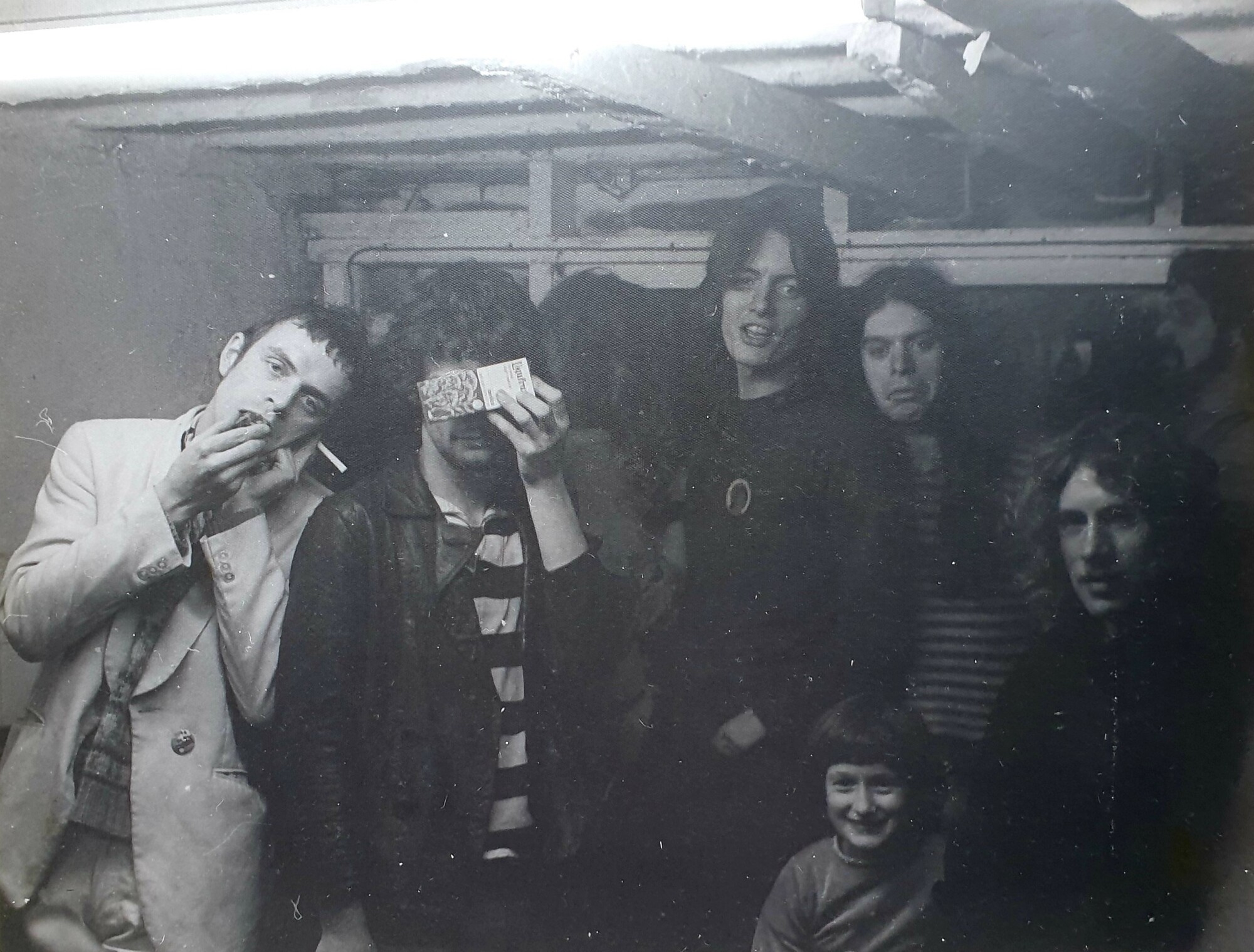
What gear did you have at the time? (Instruments, effects, pedals, amplifiers, monitors)…
For that tour, Kif Kif was using his own, unique and very mixed brand drumkit – impossible to say what drums they were, or who made them. Steffe Sharpstrings was playing a Fender Jazzmaster guitar, and using fuzz, ring modulator, wah-wah, swell pedal and a tape delay – I think it was a WEM copicat… His amp was a 50 watt Marshall valve amp, driving a Marshall 2X12 cab. Gavin Da Blitz was playing an EMS VCS3, with EMS keyboard, which he put through a modified Teac 4 track tape machine as a delay. His amplification was a 60 watt per channel stereo hi-fi amp, which was driving a pair of 1X12 speaker cabinets. Daevid Allen was playing a Fender Strat and using any number of effects units – I can’t remember what they were, and using a Laney 60 watt combo. I was playing a Fender Precision, and used a Shaftesbury Duo-Fuzz pedal – about three times in the whole show. My amplification was a 100 watt WEM valve amp, which Roger Waters of the Pink Floyd had had custom made for him by Charlie Watkins, and which I was lucky enough to be able to get my hands on when they sold it – that was driving a WEM X40 2X15 cab and an Electro Voice 1X18 PA cab. PA and monitors were provided by the promoter each night, so never the same twice!
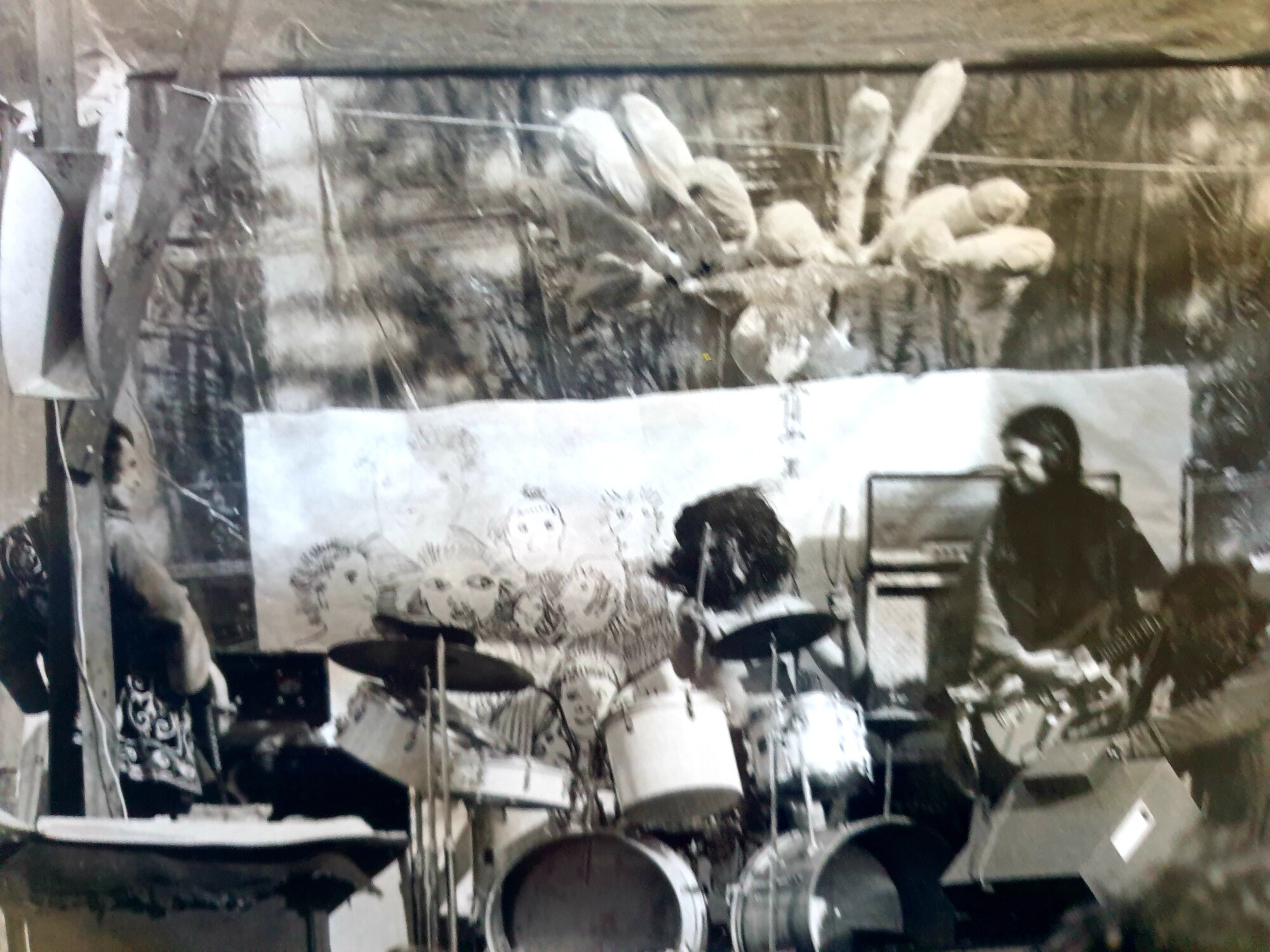
When did members of Here & Now begin living in the commune and what was that like?
I don’t think there was ever a time in the early when all of us lived together – except when we were in the bus on tour – there was always one person or another living elsewhere, for whatever reason, but eventually, after Kif-Kif, Suze da Blooz and Annie Wombat had left, then later, Steffe, we found ourselves in a short-life rental house just outside London – a millionaire’s house which had been compulsorily purchased by the government to make way for the eventual construction of the M25 motorway… The main house had 6 bedrooms, so there was plenty of room for us, but it also had an out-building the size of a bungalow, that was one big room inside with a split level platform at one end, which made it an ideal rehearsal space – between tours, we’d have the backline and PA set up permanently in there, and with the nearest house being almost a kilometre away, we could rehearse more or less whenever we wanted to – a godsend!
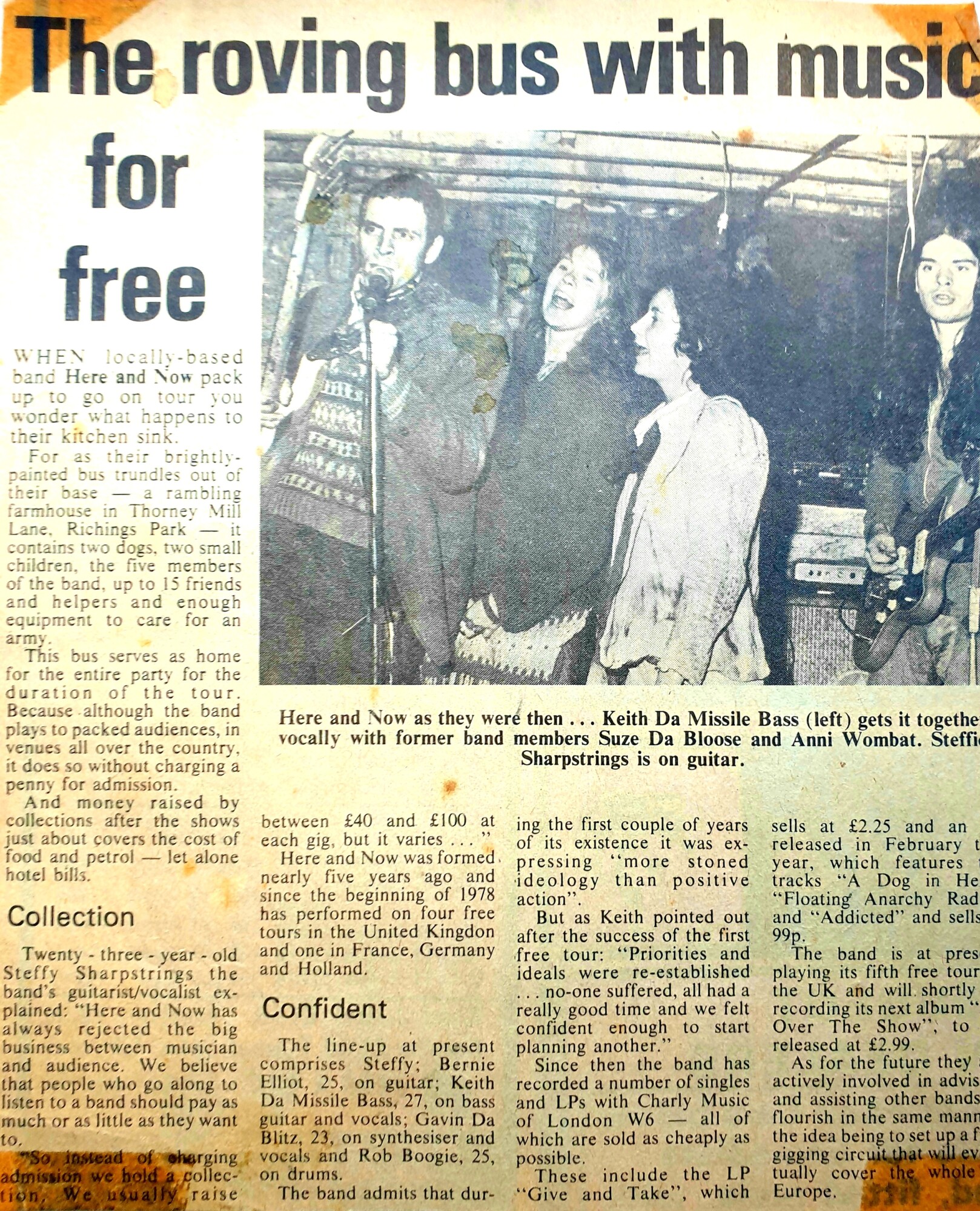
The albums ‘Fantasy Shift’ and ‘Theatre’ were written there… Half the crew lived there as well, and it was a very productive time indeed… Of course, the occasional arguments flared up, but on the whole, it was big enough – the grounds around the house were about 20,000 square metres – for everyone to have their own space if they needed it, and so such disagreements were rare… The band was the focus, and that was bigger than any of us, so people tended to dissolve any personal concerns in favour of the greater whole… It was a very creative and positive time, all in all…
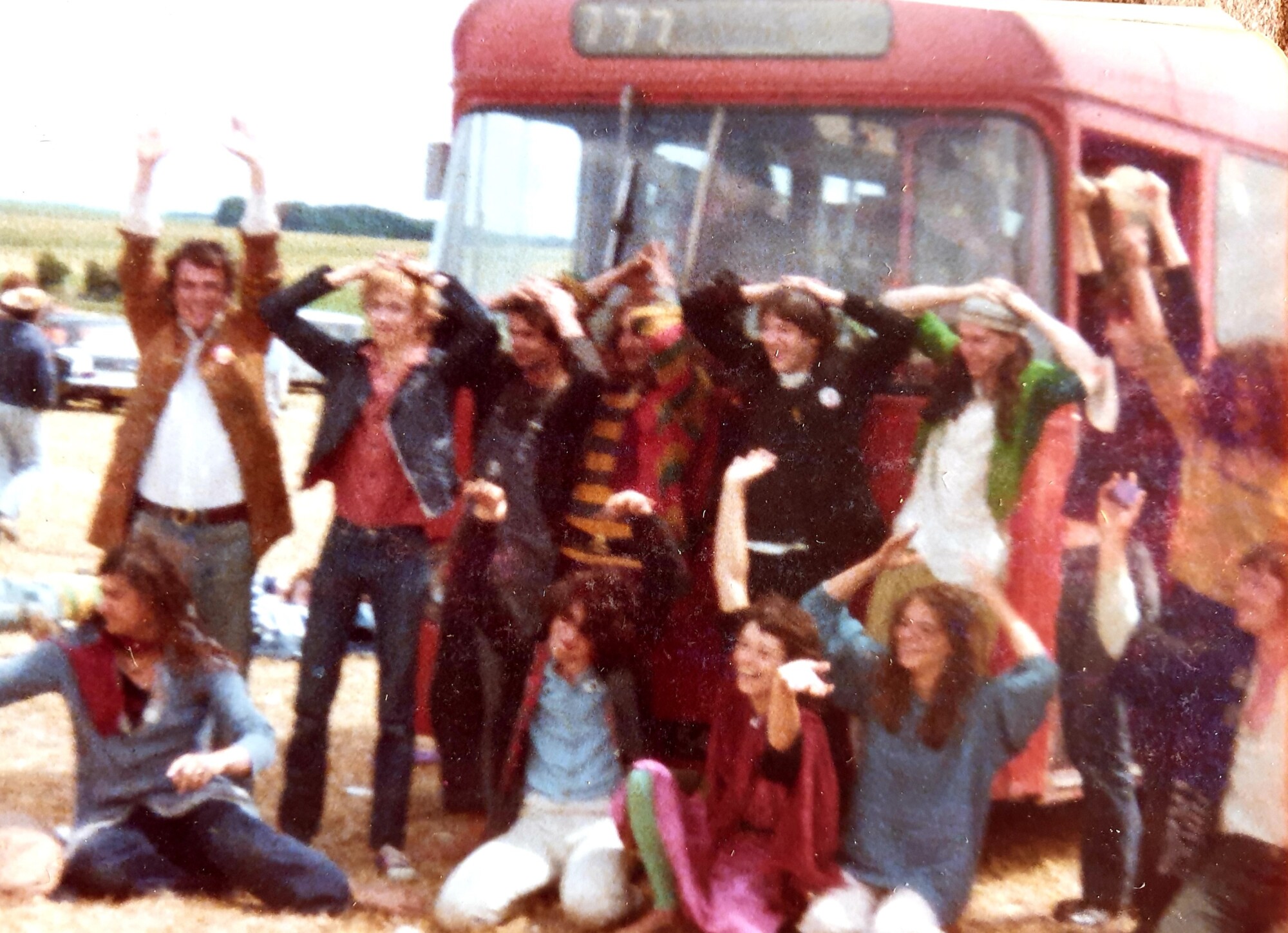
The band itself is very well known in the circles of the UK Free Festivals movement. There’s a fantastic book called ‘Festivalized: Music, Politics, and Alternative Culture’ by Ian Abrahams & Bridget Wishart. Would you like to elaborate how you see the scene?
The Free Festival movement was quite amazing – started out by Willy Hope, and to a lesser extent, Sid Rawles, Here & Now very quickly got involved – the concept being very close to our collective philosophical heart – and by 1978, we were doing what turned out to be an annual benefit – til 1983 – at Sussex University, to raise money for the stage and generator hire for Stonehenge Free Festival. We provided our PA – by then we had our own 3kw rig – which got bigger year by year – and lighting rig, while Nik Turner provided his Pyramid set-up to go over it… It used to be like a pirate raid, getting on to the site, whilst avoiding the Police, who by ’79 were setting up roadblocks on the London side of the A303 (the road that passes by the stones), so we used to detour for miles in a loop round to the south of them, and approach it from the other side – usually at about 3am.
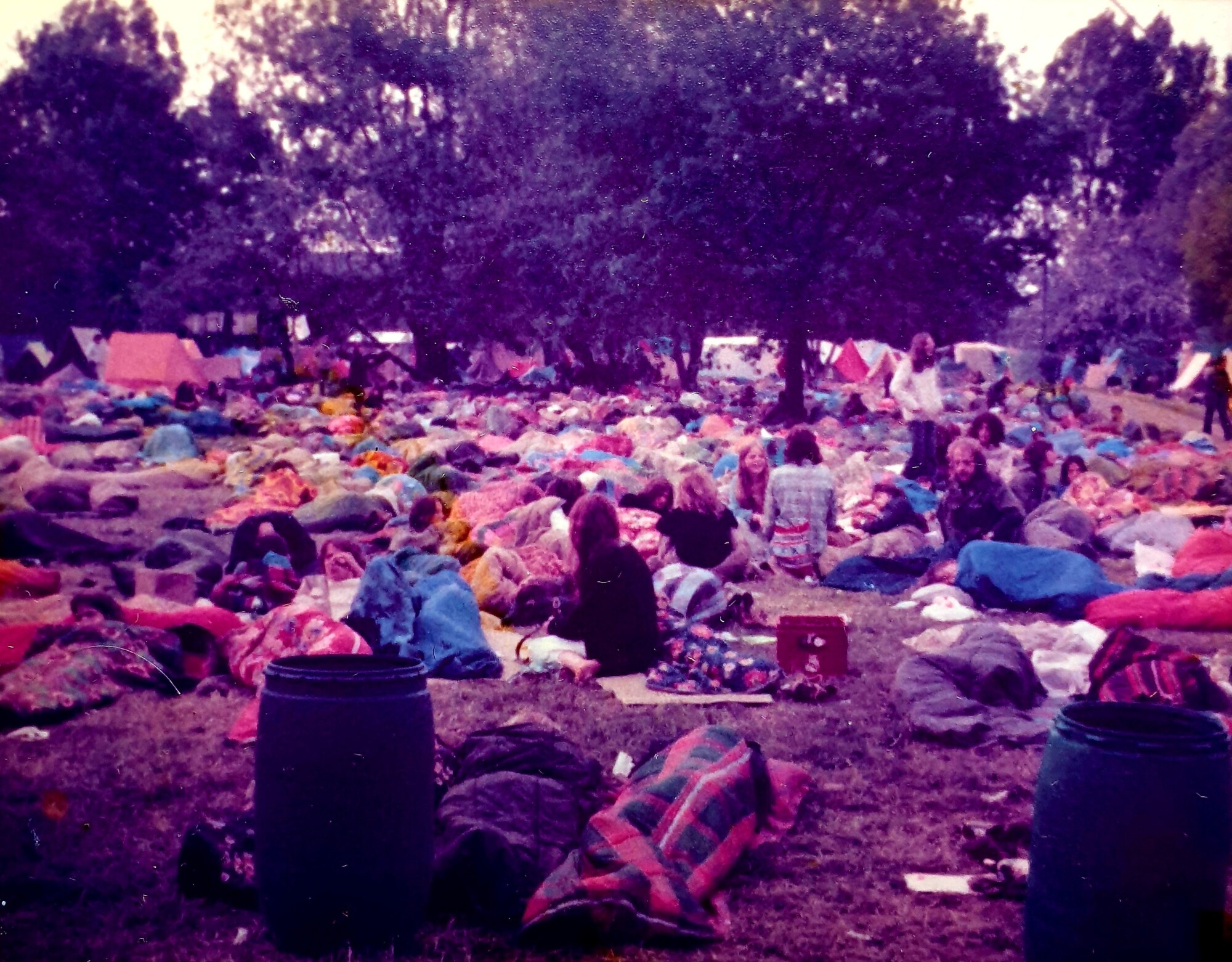
The scaffolding crew who put the basic stage up were totally into it, and would have the stage up in about 20 minutes flat… Now, I must explain that in the UK, there was still a law in place from about the 12 or 13th century, which gave people the right to squat on a piece of land (or building, if it didn’t involve breaking in) if they erected a structure on it, and put up notices on the property to proclaim squatter’s rights were in force – the law being that once you did that, it was no longer a criminal offence, and had to be dealt with by the Civil Courts. If you weren’t evicted within a year and a day, the land became yours. Of course, that wasn’t what we wanted – we just wanted it to go through the Civil Courts, which would have taken months to resolve, and meant that the Police couldn’t legally interfere – by which time the festival would have happened, and been long gone… It was this law which enabled most of the free festivals to go ahead – and there were a lot of them at the time – Stonehenge being the biggest, but several happened in various locations around the country – Meighan Fayre, in Wales, and Deeply Vale in Manchester being a couple of the bigger ones… The free, anarchistic spirit that evolved through these events was both magical at the time, and had a strong, longer term influence on the rave culture of the late 80’s/90’s… There were some incredible things that happened at Stonehenge – I remember one year, a theatre company turned up with a marquee, and performed Shakespeare plays throughout the festival, while just nearby, an outdoor cafe set up – with white wrought-iron tables and chairs, serving strawberries and cream and champagne at ridiculously cheap prices… There was the Tibetan Ukrainian Mountain Troupe, too – who had a big marquee and their own stage, PA, lights and generator, putting on all the bands that we couldn’t fit in on the main pyramid stage… They were a regular fixture. Then one year, as we were setting up the PA and lights in the pyramid, a huge, circular white marquee was erected about 100 metres away, the walls and roof of which were lit up from the inside, and from which emanated soft electronic ambient sounds. It looked and sounded beautiful! One of the people involved came up to tell us that they wouldn’t make any noise while bands were playing, but that they had a whole electronics workshop set up in there, so if anything broke on our stage, to bring it over, and they would fix it! All for free! There was a wonderful spirit of non-profit making and intelligent, creative co-operation evolving in the whole free festival scene… It was truly magical and very hopeful… Until Maggie Thatcher killed it off in 1984/5… But that’s another story…
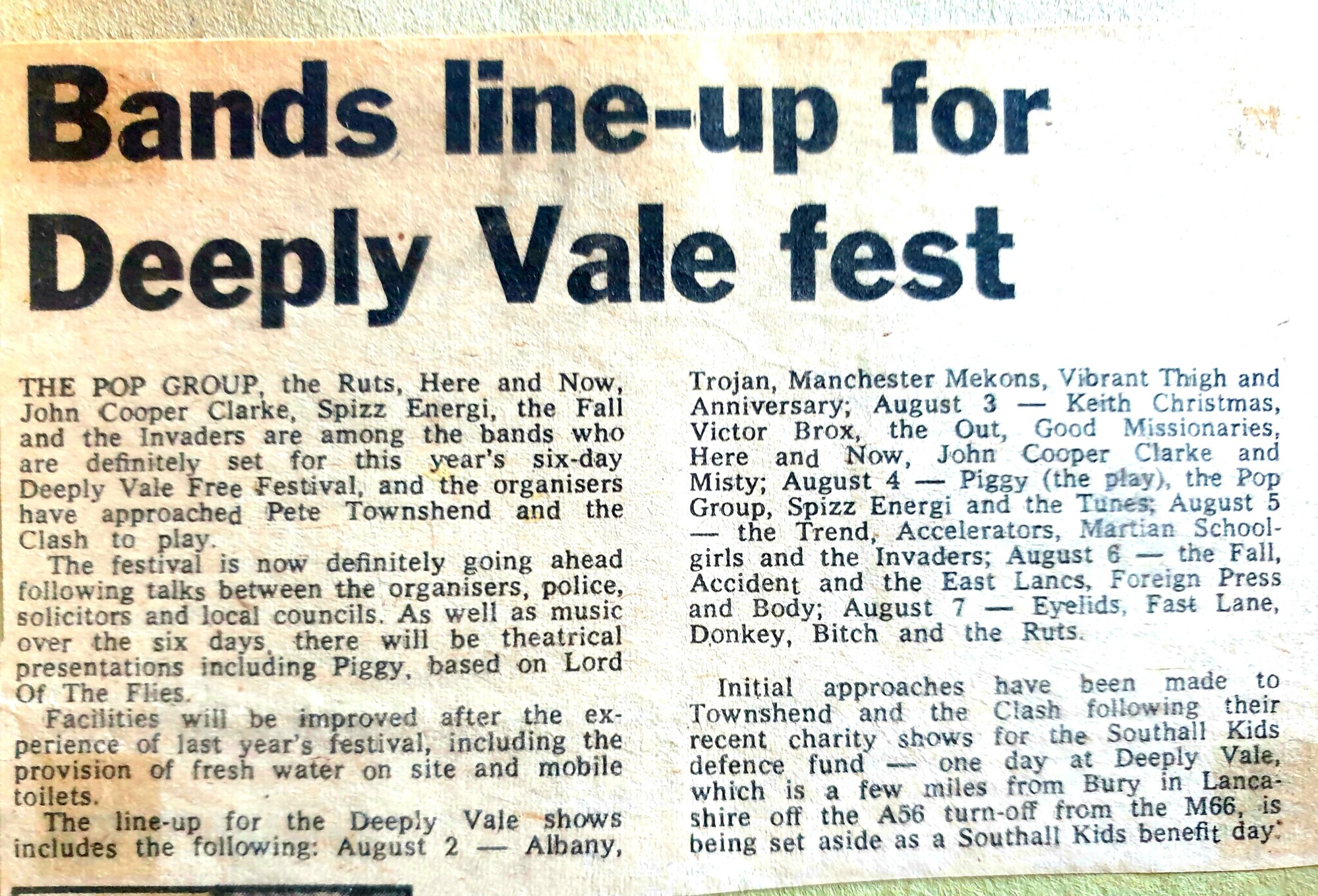
Were there any bands that haven’t really recorded much, but are worth mentioning?
So many! And so little time! If you mean bands who supported us, there are a few who spring to mind – Poisoned Electric Head, Wizards of Twiddly, Dangerous Girls, The Astronauts, Danny and the Dressmakers (the leader of whom went on to form 808 State, a successful tecno-pop outfit) and One Eyed God to name but a few…
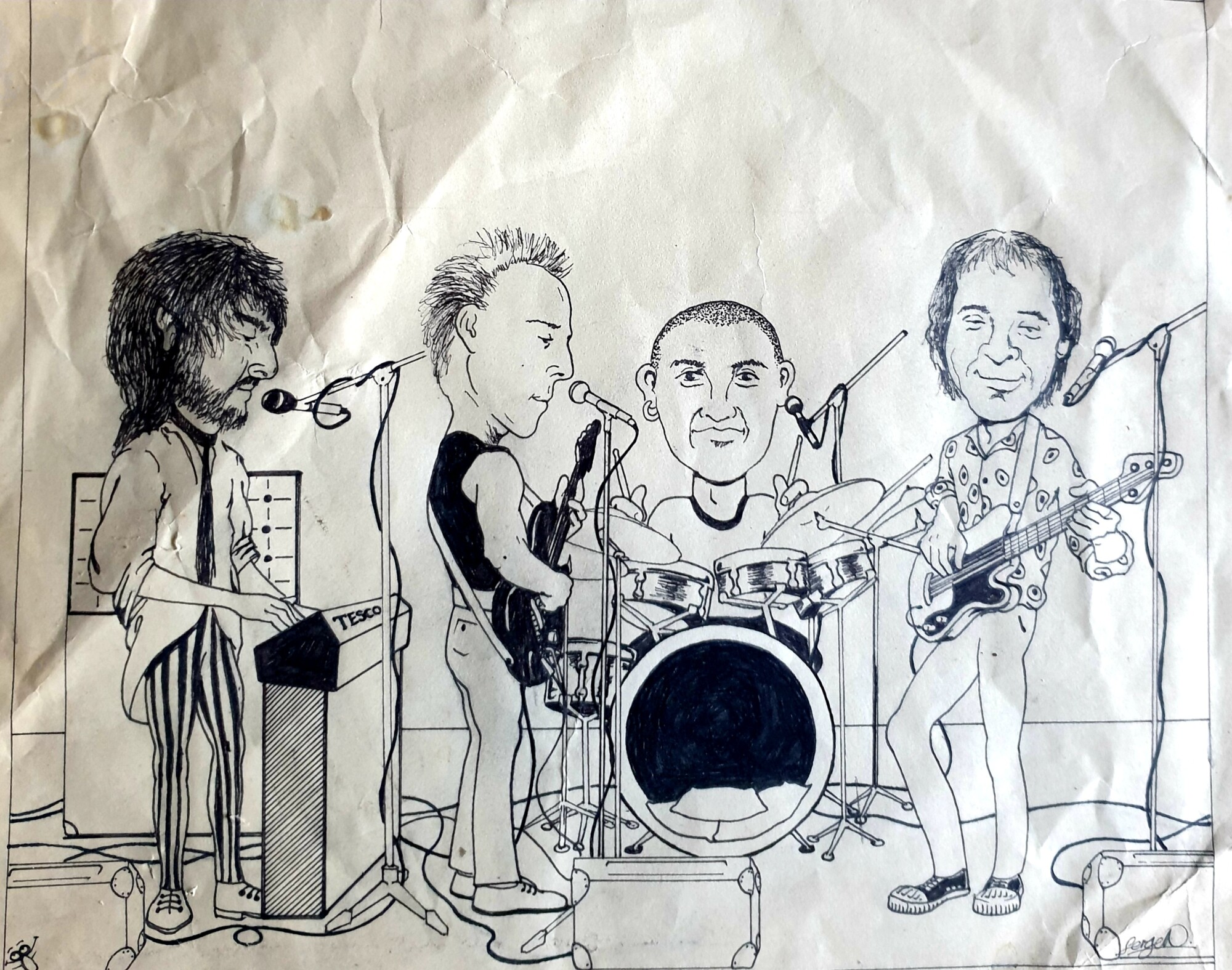
Would you like to talk a bit more about the Legalise Cannabis Campaign, Stonehenge Festival, BIT, Release…
We were quite closely connected to both Stonehenge Festival and the Legalise Cannabis Campaign – we did quite a few benefits for the latter – but while we were aware of, and supported BIT and Release, we were never very closely involved… For myself, I think that all of the “recreational” drugs should be legalised, because I think people who are going to get messed up on them will do it anyway, regardless of whether it’s legal or not, and if you take away the criminal aspect, you make it easier for them to come forward for help – plus, you remove the profit side of things from the gangsters who run it, and – looking at the revenues coming in to the US states that have legalised and taxed marijuana, you can actually create good things from it…
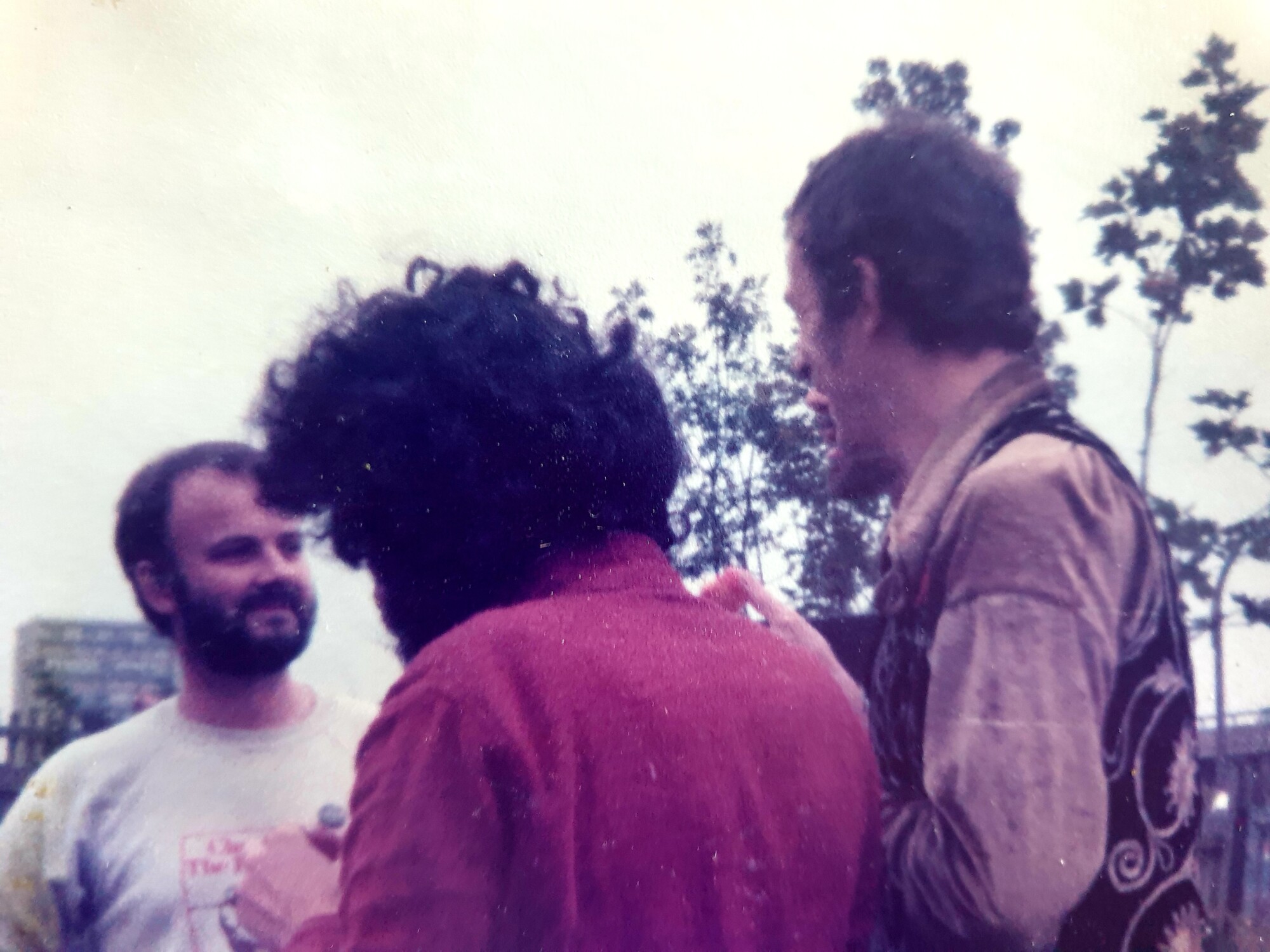
You didn’t charge any fees for your gigs, only for voluntary contribution…
That’s true up until 1979/80… it was a part of our whole philosophical approach to things. We were pointing out our feeling that it was the global corporate military/industrial/entertainment complexes who had an iron grip on the people and culture of the west, along with the global banks, while the politicians had been bought out long ago, and just passed the laws that made it easier for the money men to keep things going that way… We believed that they were deliberately stifling any references to self – and even spiritual – awareness, as that was rocking the boat… So, in our youthful idealistic vision, we believed that one way of freeing yourself from the consumer society of wage slavery, rewarded by cheap baubles, bread and circuses that was on offer was to try to get off the profit led grab everything-you-can gravy train, and evolve moneyless – or at least non greedy – systems that shattered the illusory world that was – and still is, in my opinion – being imposed on us. That made us marked men in the eyes of the establishment, and the more well known we became, the more police pressure was applied. We were harassed, obstructed and bullied by them everywhere we played… Interesting times, and some truly shocking examples of the lengths they were prepared to go to – like strip-searching one of our numbers while she was in labour, about to give birth… There are many such stories…
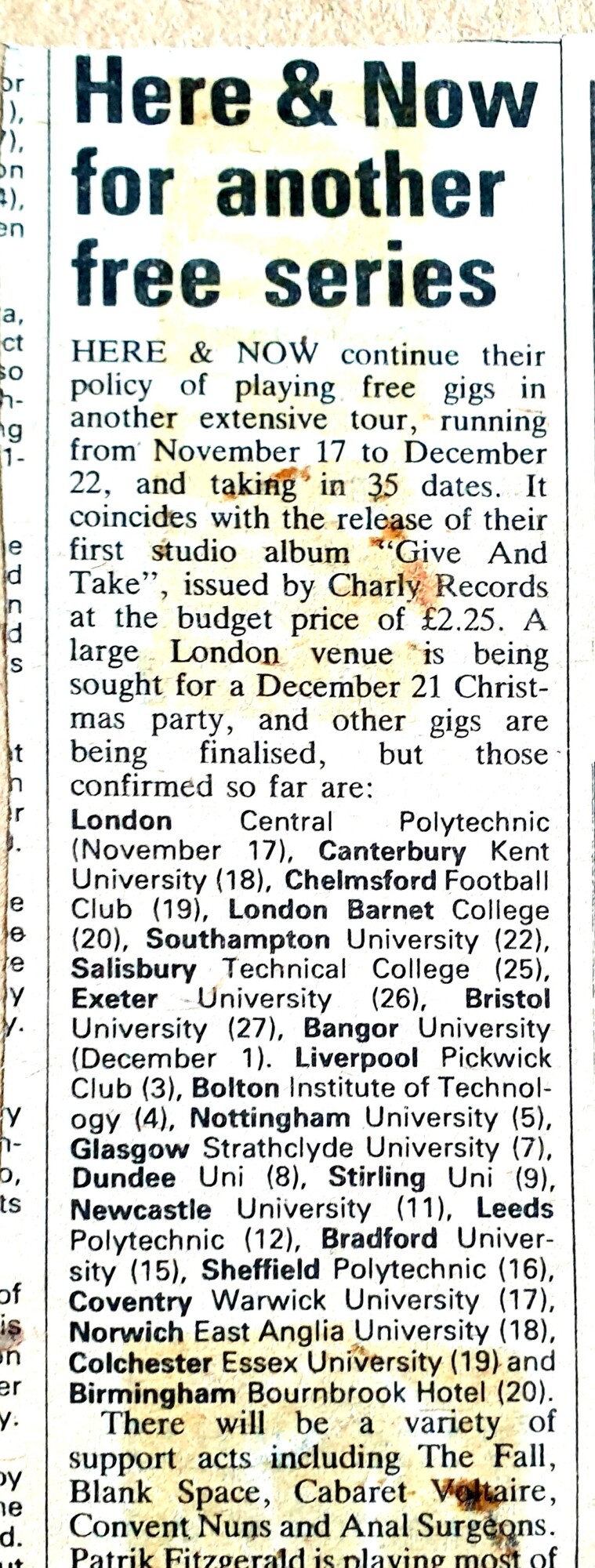
In 1978 Daevid Allen decided to stop for a while. What were the circumstances around it?
We started rehearsals early in that year – for a second Planet Gong tour – and he lasted for about a week, but then didn’t show up one day… It turned out he had developed a collapsed lung! So we had to do the tour – which had already been booked – without him, under the rather unwieldy title of “Here & Now / Planet Gong”. It went very well, and Daevid Allen, once he’d recovered, decided that we didn’t need him any more, and went to New York to start a new project “New York Gong”.
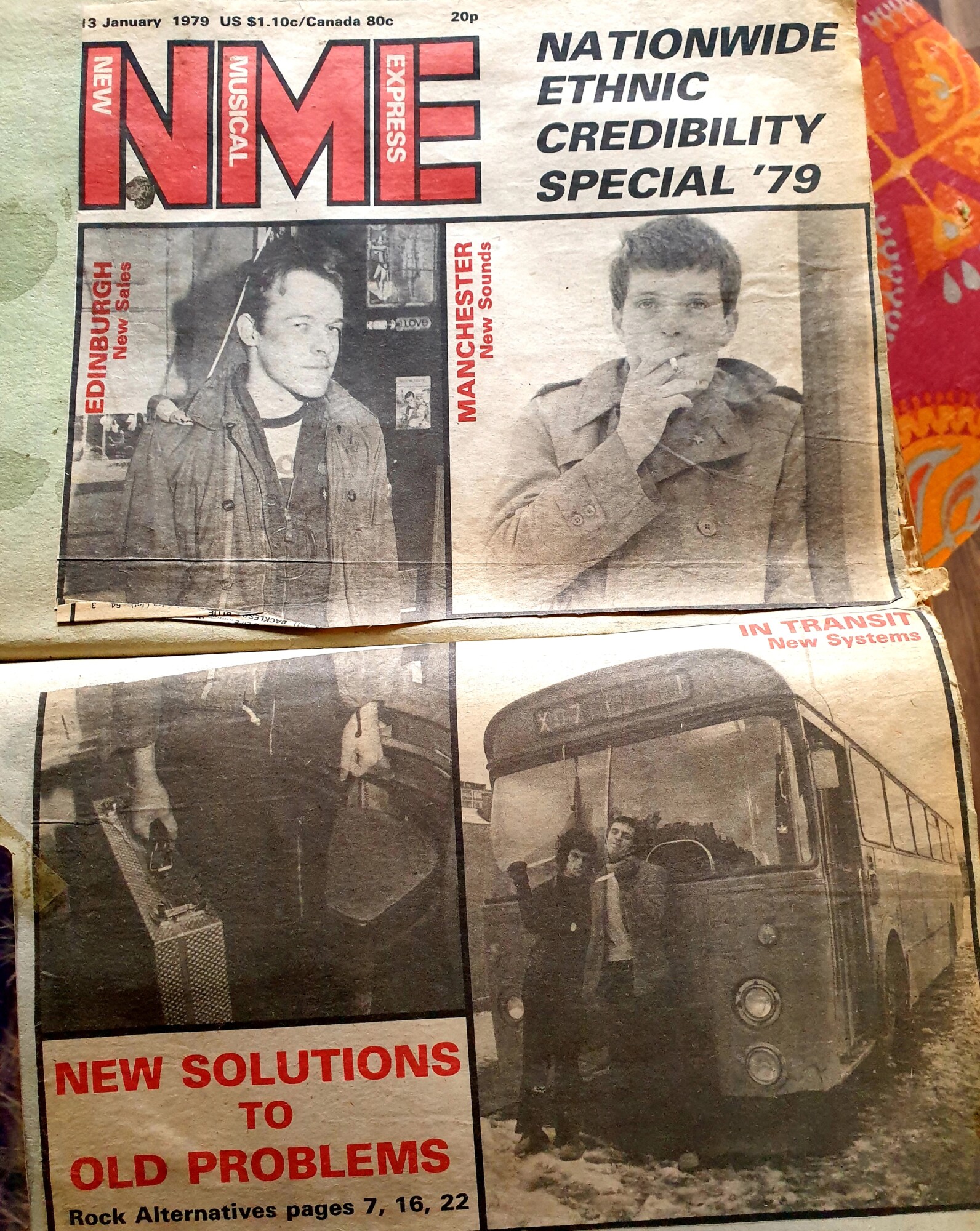
Would you like to discuss how you typically approach songwriting within the band?
It usually starts when someone – quite often me – comes up with a riff, which is then knocked into shape by everybody, and then the idea stimulates new parts for it, and then it’s usually me who comes up with the lyrics… But I quite often get a complete song – lyrics, music and everything, and then it’s just a matter of working out the best way to play it… We used to work up new material from just jamming together, but we don’t get many opportunities to do that, these days, because we all live in different corners of England – drummer in Kent, Keyboards in Somerset, Guitar in N.W. England, and myself in N.E. England – which makes it logistically and financially rather more difficult!
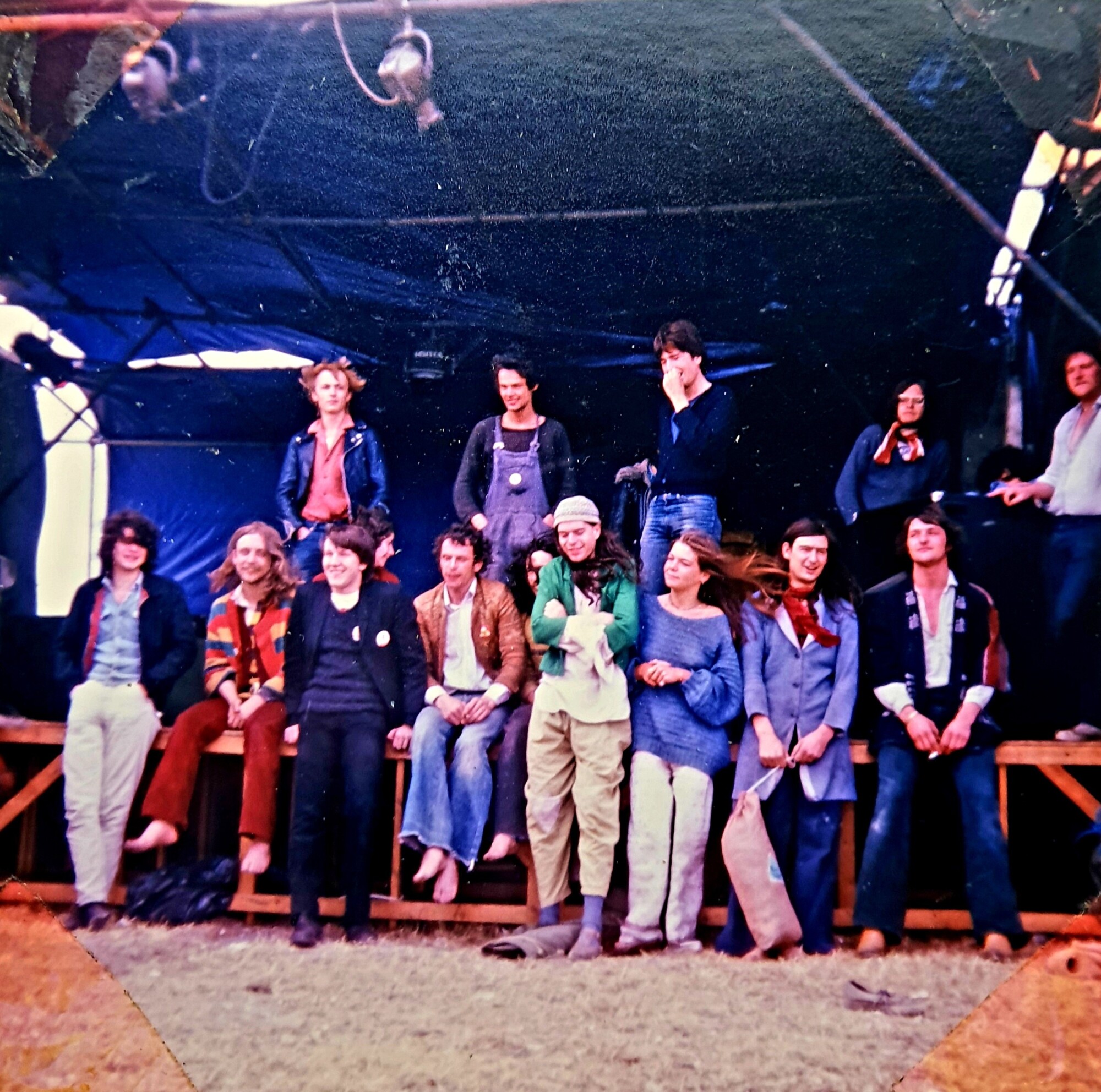
Where was ‘Give And Take’ recorded and what are some of the strongest memories from recording it?
‘Give and Take’ was recorded at Foel Studios in N. Wales – which was a converted barn in an old farmyard – it was 16 track analogue in those days – but is now more or less entirely digital, and has two cottages for live-in accommodation – so it’s a rather nice place to work in – although it was great back then, too…
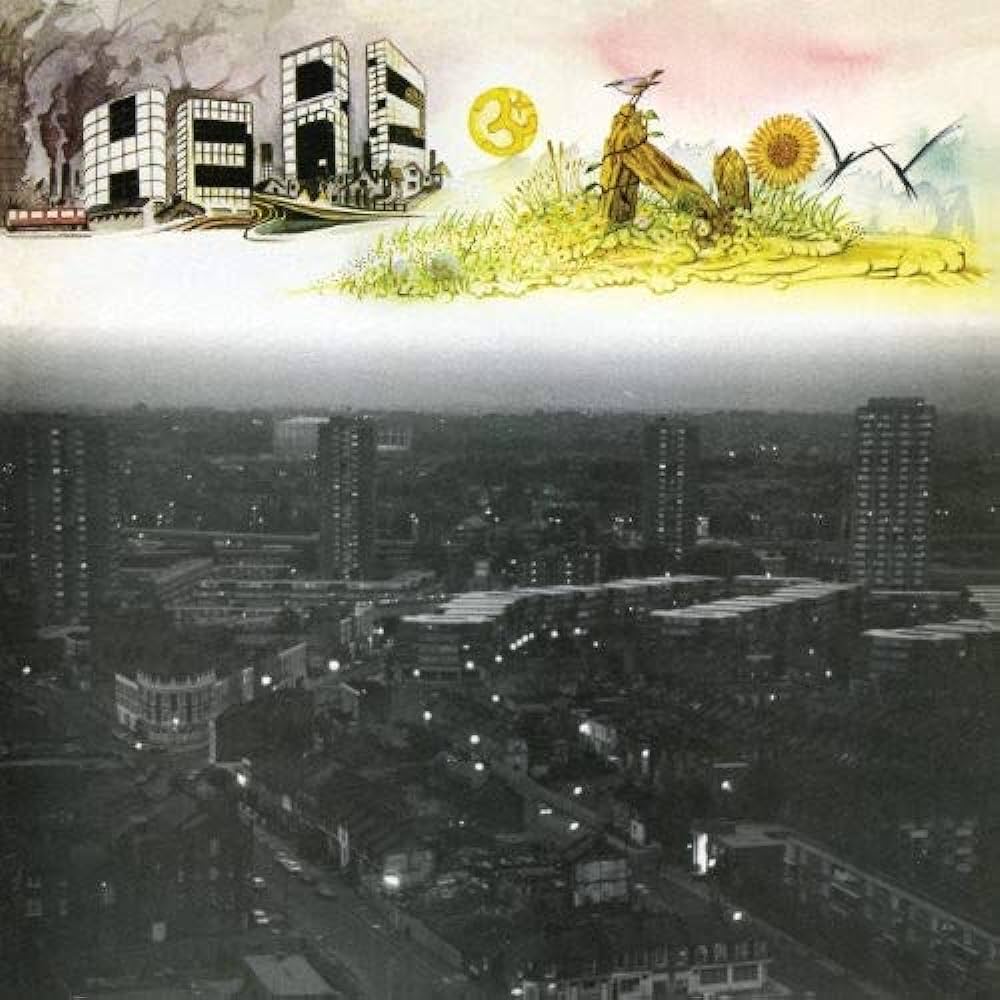
Dave Anderson, the bass player with Amon Düül II, and later of Hawkwind and Groundhogs fame, was the owner and engineer, and was great to work with – he got our style straight away, which helped a lot, time-wise… I believe he’s recently passed it on to new management…
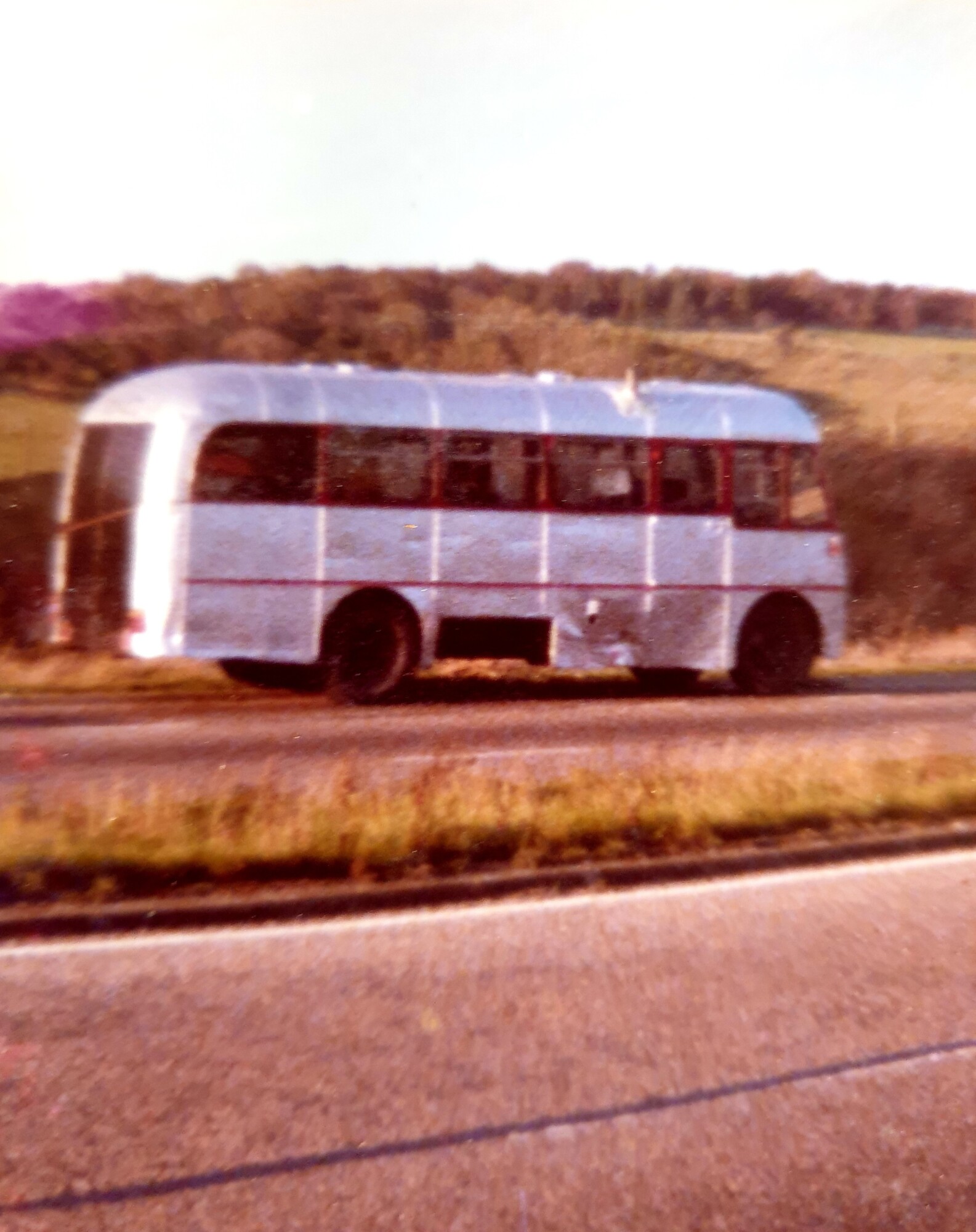
We stayed in our tour bus back then, though. It’s a long time ago, so I don’t have too many memories about the recording – except that we were on a very tight schedule, but somehow, we got it all done, and even had time to record an extra three tracks, which were released as a 7 inch E.P. (extended player, in case you don’t know!) Which had ‘A Dog in Hell,’ ‘Addicted’ and our original version of ‘Floating Anarchy Radio’… So a 12″ LP, and the EP were all done – recorded and mixed in two weeks! A far cry from the time it takes these days…
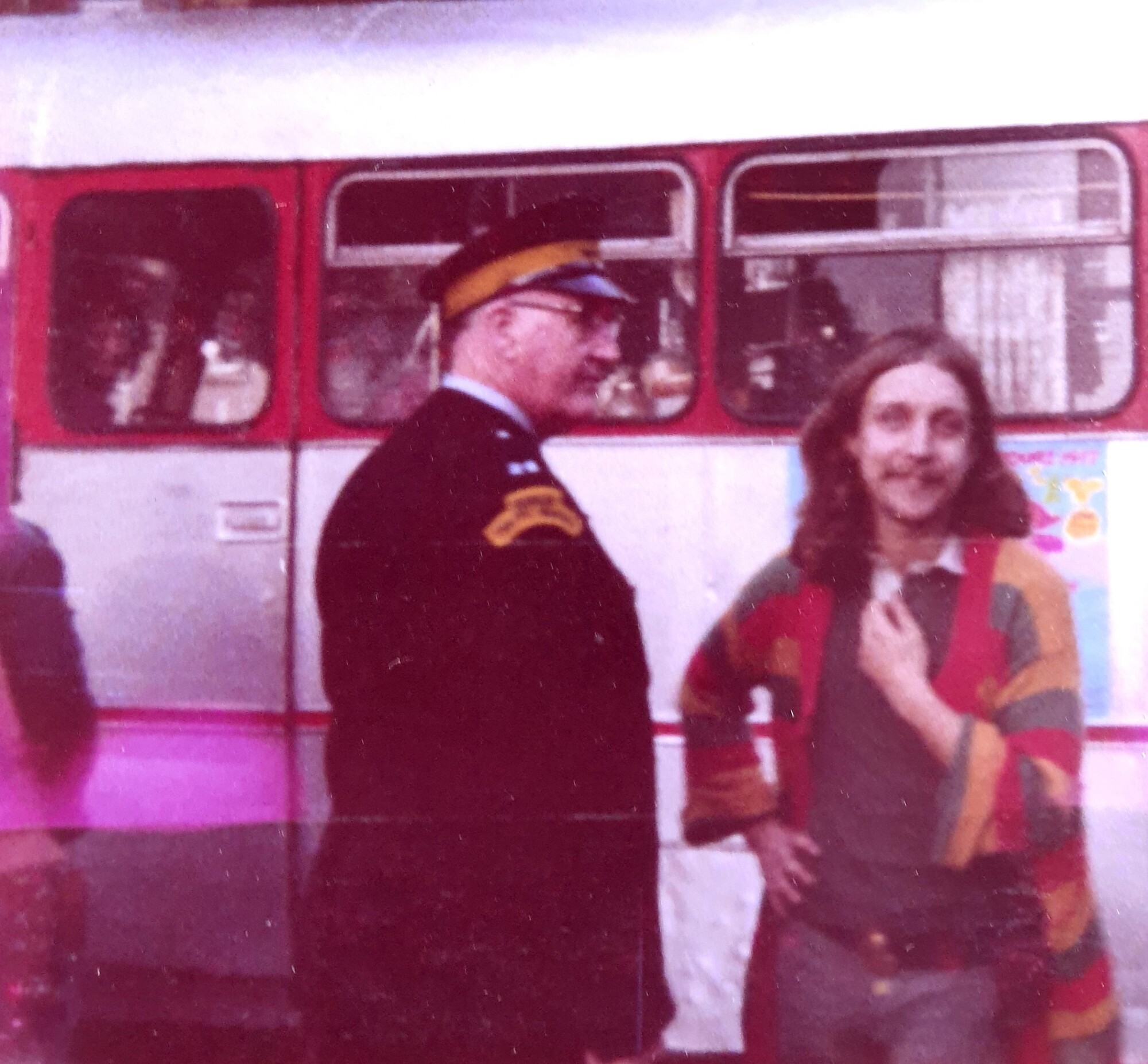
Tell us about the split with Alternative TV, ‘What You See… Is What You Are’.
Ah, yeah… a legend in its own lunchtime! Well, we’d just done a tour with Mark Perry’s Alternative TV, and he’d just set up an indie label – Deptford Fun City – with Rough Trade – one of the bigger indie labels at the time, so between us, we thought it’d be nice to mark the event with an album – one side ATV, and one side us… But there’d been some confusion over tail-in and tail-out on the master tapes at the pressing plant, so the first thousand copies had Here & Now pressed backwards! We managed to recall half of them, but the other 500 had already been sold, so they’re now record collectors’ prized possessions! The tour was an experiment – a collaboration between the two bands, one Space Punk, and one out and out Punk, both of whom had enormous respect for each other – but to begin with, the audiences just didn’t get it – the more hippified people would leave the hall while ATV were on, and the more punky ones would leave when Here & Now were on, but gradually, the penny dropped – these were both really good bands, and by the end of the tour, both crowds were staying to watch both bands, so I guess you could say it was a success – there was a cross-pollination between both bands and audiences – which was what we’d been hoping for all along… But a great little album!
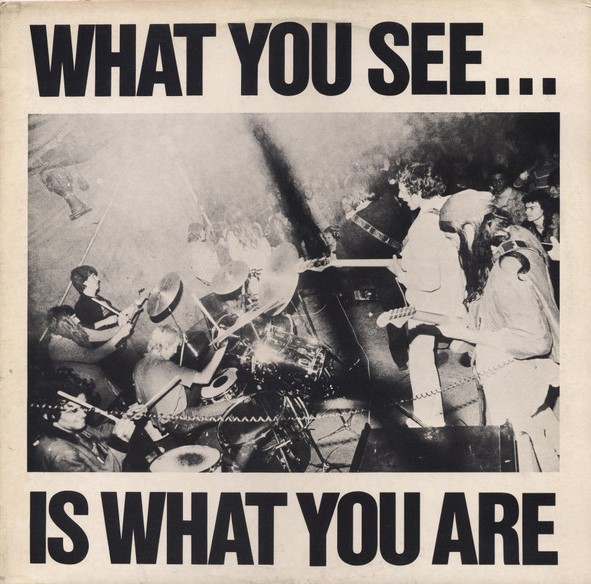
What about ‘Stolen Moments’? There were a bunch of official/unofficial tape releases at the time… which in your opinion represent Here & Now the best?
We released three cassettes during the years 1980 – ’84 – ‘Off the Cuff,’ ‘Stolen Moments’ and ‘Coaxed out from Oxford’ – we were totally independent during those years – we had our own PA, lights, tour bus and equipment truck, and we’d bought 12 cassette copying machines, as well as setting up a silk-screen printing workshop, so we were printing our own T-shirts and posters, too – as independent as we could possibly be…
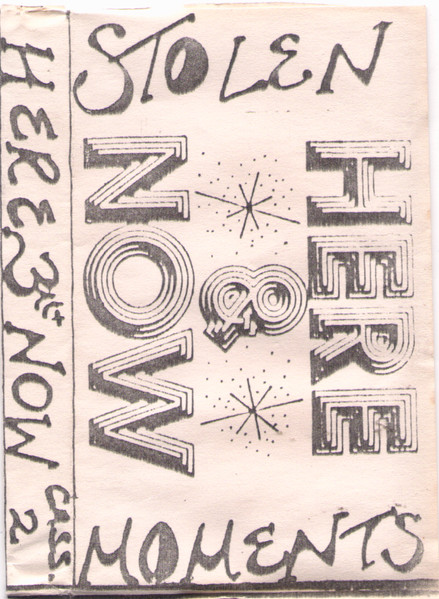
I think each one of those cassette releases captures a snapshot of the band in different stages of its evolution, and as such, I don’t think any of them is any better than the others – they’re just different facets of the ever-changing character of Here & Now…
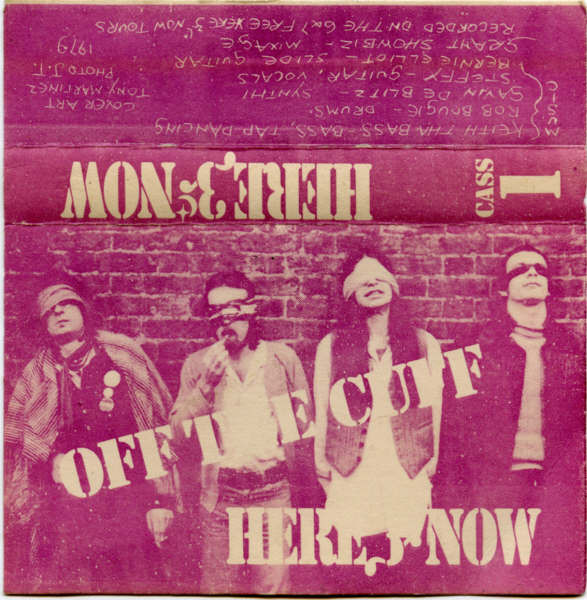
There was quite a change in the sound when you worked on ‘Fantasy Shift,’ what inspired it?
It was a natural evolution from ‘All Over The Show,’ really – but during the time we were writing and demo-ing the new material (in the commune mentioned above) we were introduced to a producer called Trevor Evan Jones, who had worked with – amongst others – The Moody Blues, and my guitar hero, the now late, great Jeff Beck – which was enough for me to say let’s give it a go with him, despite the fact that our first 2 albums were self produced.
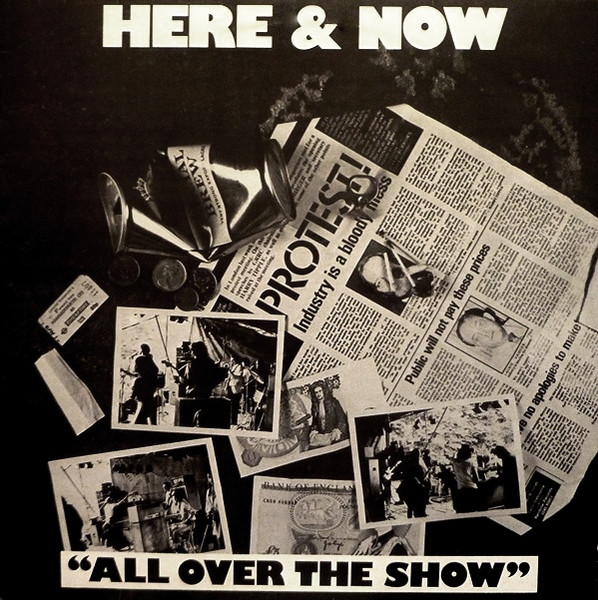
He had a fairly strong effect on the material we were working on – in that he tightened and tidied up some of the arrangements, and – dare I say it – brought a more commercial feel to the album. We recorded it at a brand new studio in Slough, which was quite near to where we were living – and it cost us nothing, because the owner had asked us to go in and iron out any imperfections in the studio – of which there were a lot – so it took us three months, because of that and our touring schedule… I can’t say I was 100% happy with the result, but then I never am – that’s one of the things that still drives me forward…
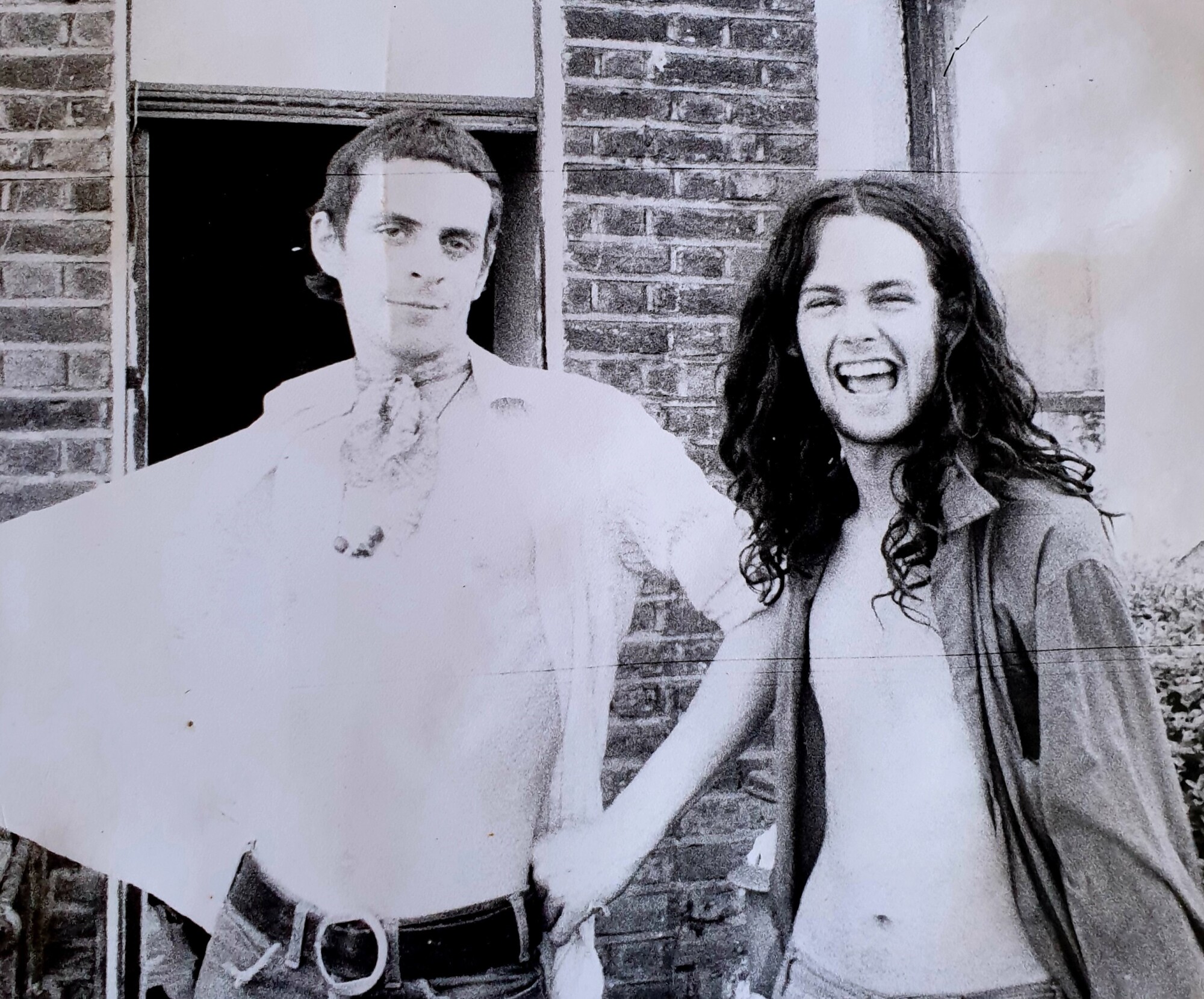
I would also love it if you can add some commentary to ‘Theatre,’ ‘Been & Gone,’ ‘UFOasis’.
OK, so ‘Theatre’ was also written in the commune, and is again a natural evolution from ‘Fantasy Shift,’ material-wise – although we’d been approached by an indie label called Landslide, who wanted us on their label. They had an in-house producer by the name of Dave Goodman, who had produced the first three or four Sex Pistols hits and, I think, their ‘Never Mind the Bollocks, Here’s the Sex Pistols’ album, so he had a bit of kudos… But I don’t think he really understood what we were about – he certainly didn’t try to influence the material at all, and was more of a sort of quality controller in the studio than an actual producer – he just did the final mix, really – and to be fair, it wasn’t a bad sound…
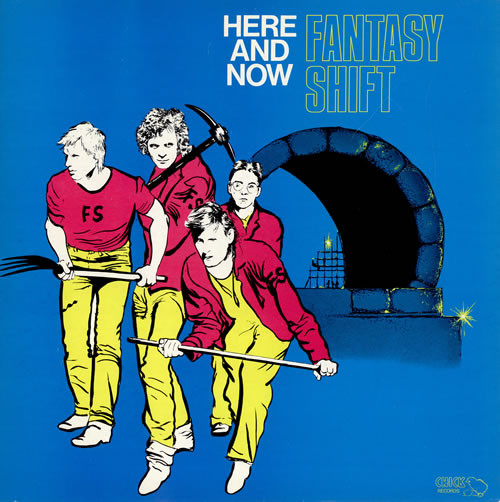
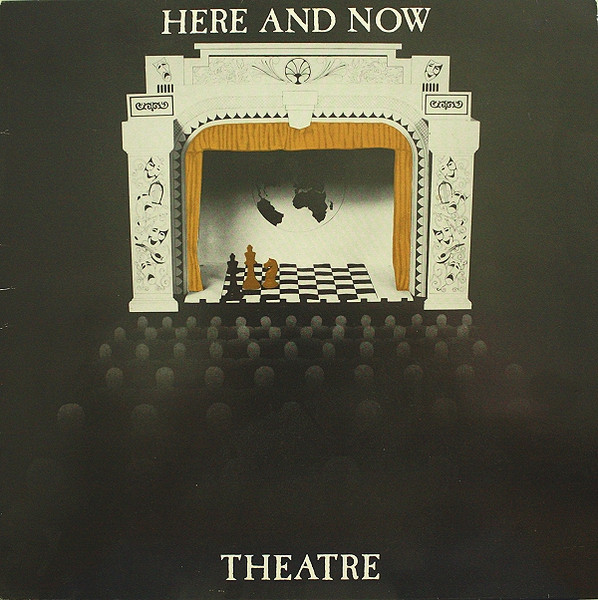
‘Been and Gone’ was our “Farewell” album – we’d decided to call it a day, after eight years of continual touring and recording – we were exhausted, really – and in retrospect, really, we just needed a long rest – which was what it turned out to be, anyway, as we got back together, with a different drummer, a year later…
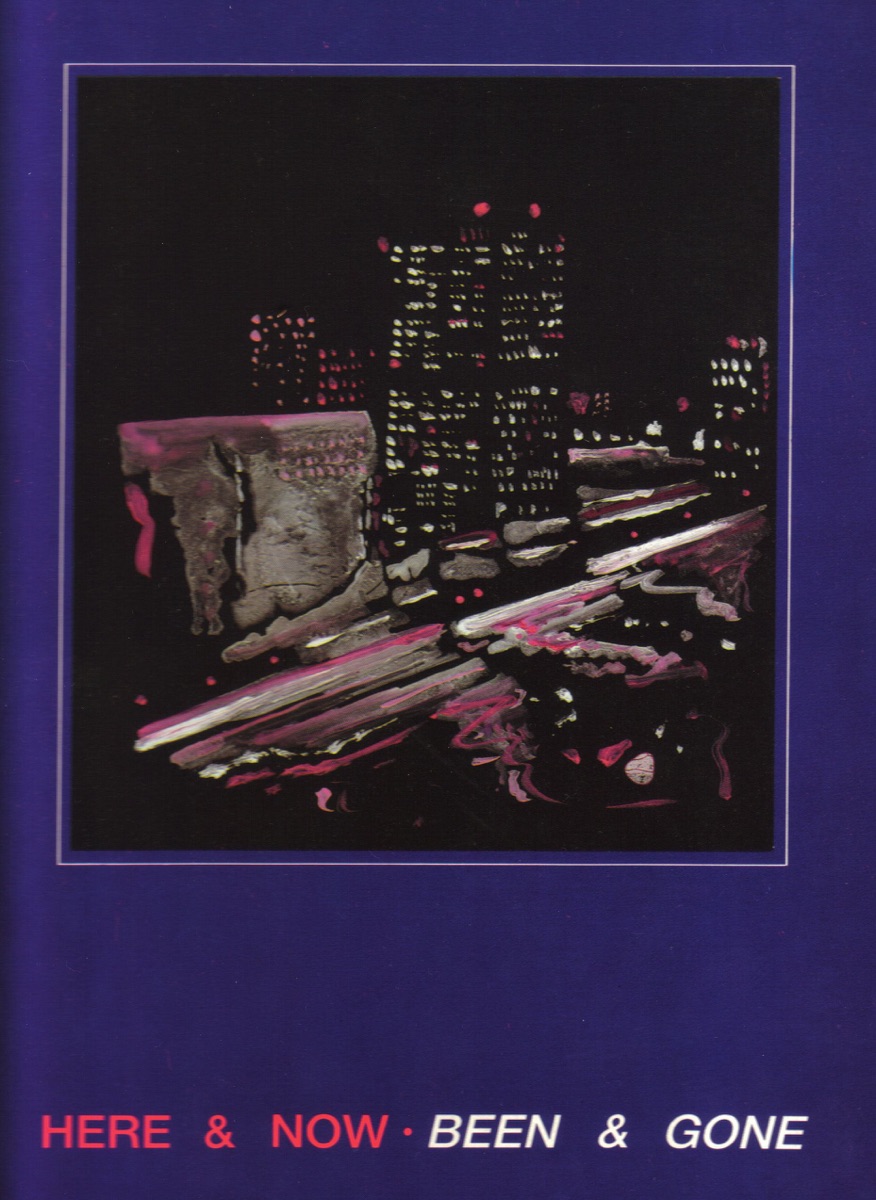
So that album was recorded at Dingwalls in Camden Town, London – our “last” gig, on a 24 track mobile… It was also filmed, and there’s a DVD – also called ‘Been and Gone’ – of that, too. We went back to producing that album ourselves, and, with a few vocal overdubs and a sprinkling of sound stardust, it came out more or less as we’d played it that night…
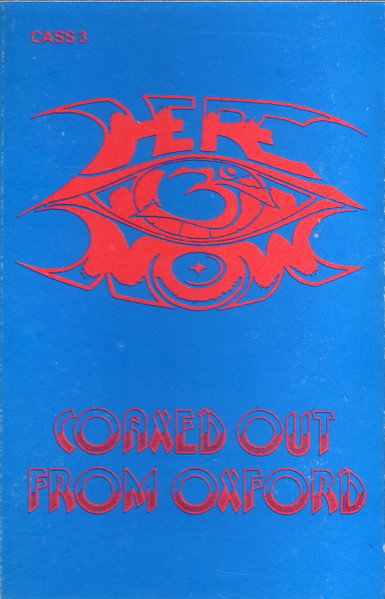
‘UFOasis’ came about because a friend of mine – Tony Gudge (who had previously financed the production of the ‘Coaxed Out From Oxford’ cassette) – had been told that one of the best studios in London at the time – Glasshouse studios – had some down-time, and he got a very cheap deal for 15 days recording and 10 days mixing time.
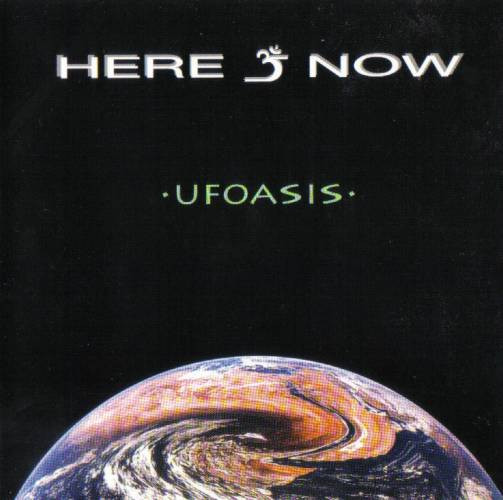
It was a big place – three main studios and three more mixing facilities across three floors, and we got to meet Jah Wobble, who was recording his second album at the same time, so that was cool… It was a very intense session, that album, because we were under such tight time pressure, so we had to use every second we had to its maximum – a good discipline! Steffe and I produced that album – and I think it worked pretty well…
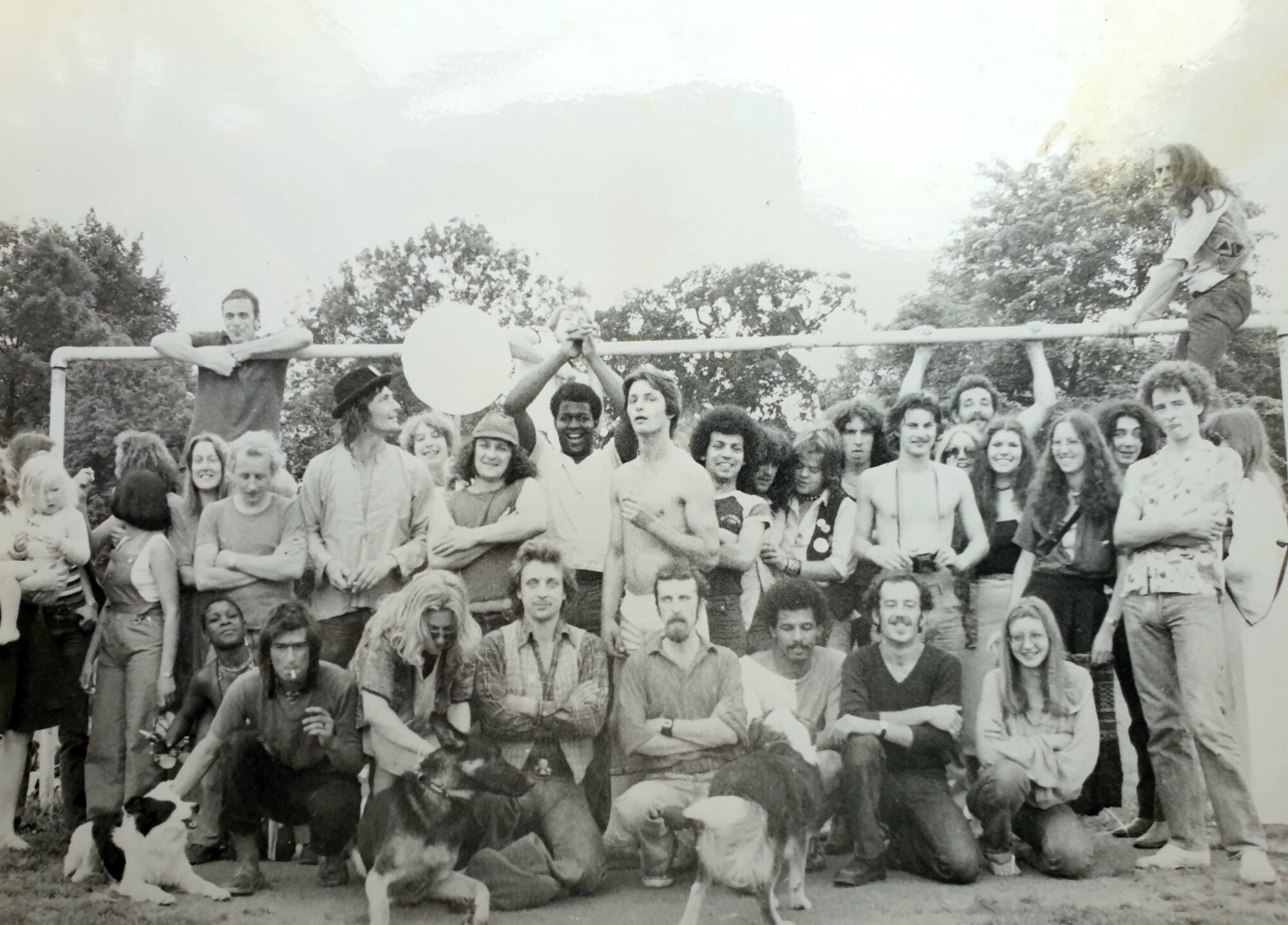
You also played with Gong again later on…
I did indeed – I’d made contact with Daevid Allen again in 1988/89, I think – he had the GongMaison line up, and was playing small clubs and pubs, which I felt was well below the level they deserved to be at, so my then business partner (Steve Bates) and I, who were running an agency at the time, agreed with him to book him a few better gigs, which we did very well. He called me up in the following spring, while he was back in Australia, to say he’d been approached to do a British TV show – called Bedrock – and would I like to do it as bassist, and maybe get Steffe on board as guitarist? I said yes, and that went ahead… I was also booking shows for GongMaison in the UK and Europe, and so on those gigs, he asked me to come on and play on a few tunes as well, and things slowly evolved from there, until I was playing the whole set, which then began to change into a new format and sound… What I’d like to say at this point is that Daevid was one of those people who stretch you, both spiritually and as a musician – get you playing things you didn’t know you were capable of – and I probably played the best I ever have in the five years I was playing with that incarnation of Gong… We only made one album in that time – ‘Shapeshifter’ – but we toured for six months of every year, and I’ve compiled and mixed a double live album, which has yet to be released, but is fantastic!
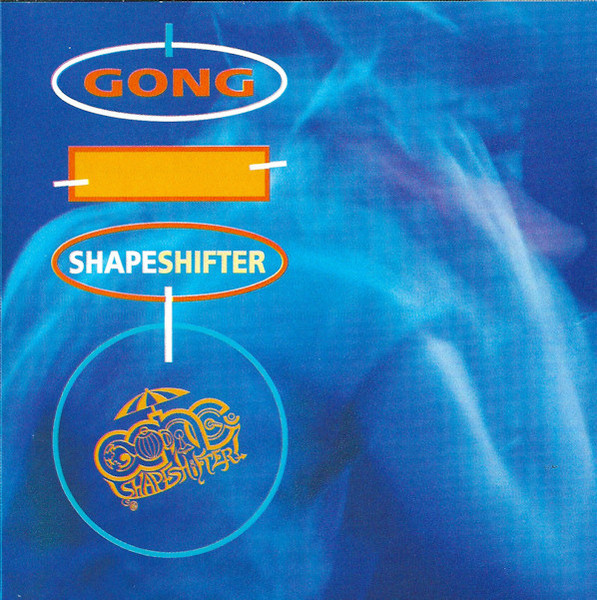
Everybody was playing at their peak, and it really came across on it… Fingers crossed it’ll be released before too much longer!
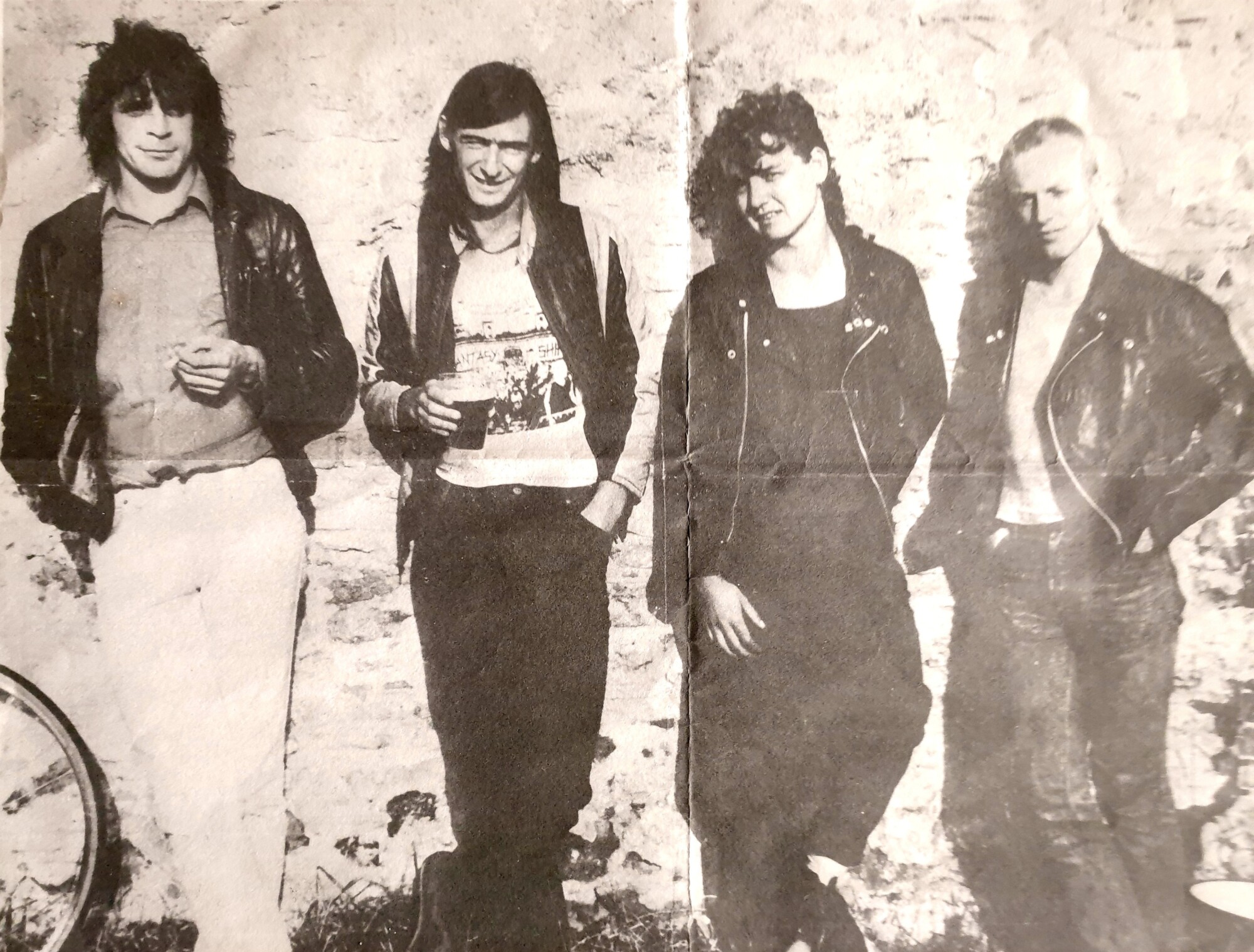
Are there any other bands and projects that I haven’t mentioned?
Well, I did a bit of production work, but between Gong and Here & Now and running the agency, I didn’t have much time for anything else!
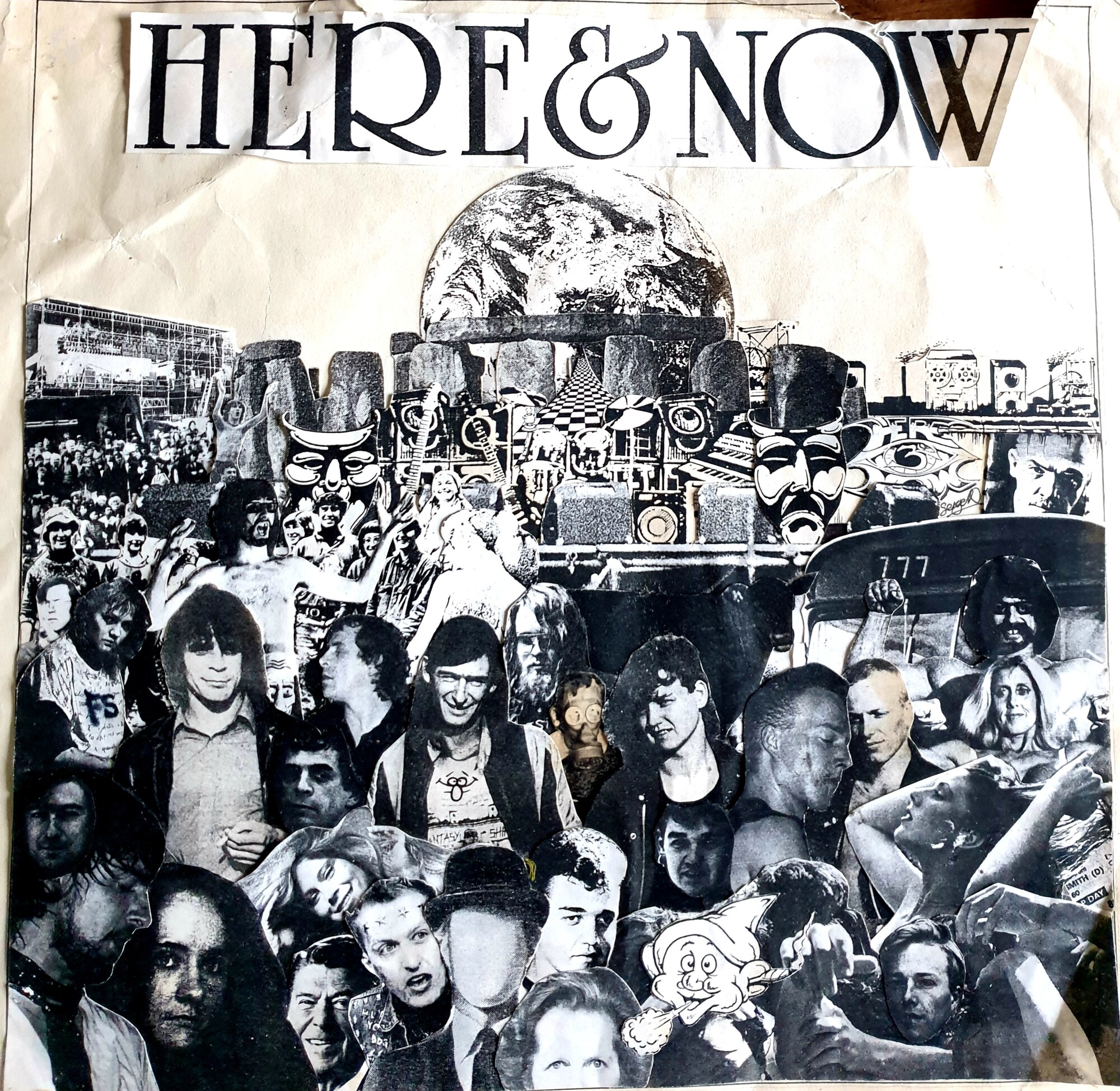
What are some of the most important players that influenced your own style and what in particular did they employ in their playing that you liked?
I’d say the strongest influence on my playing was without doubt John Entwistle of The Who – his finger playing was just incredible! I spent months trying to get his basslines from ‘Live at Leeds’ down! But Jack Bruce was in there, too – his improvisations were superb – along with Felix Pappalardi (Mountain) and not forgetting John Paul Jones of Led Zeppelin, who I think, was very underrated, Paul McCartney was a good bass player, too… Then there was Hugh Hopper of Soft Machine – another really innovative player – and Ronnie Lane of The Small Faces, and later the Faces… They all helped me to mould my own style in different ways…
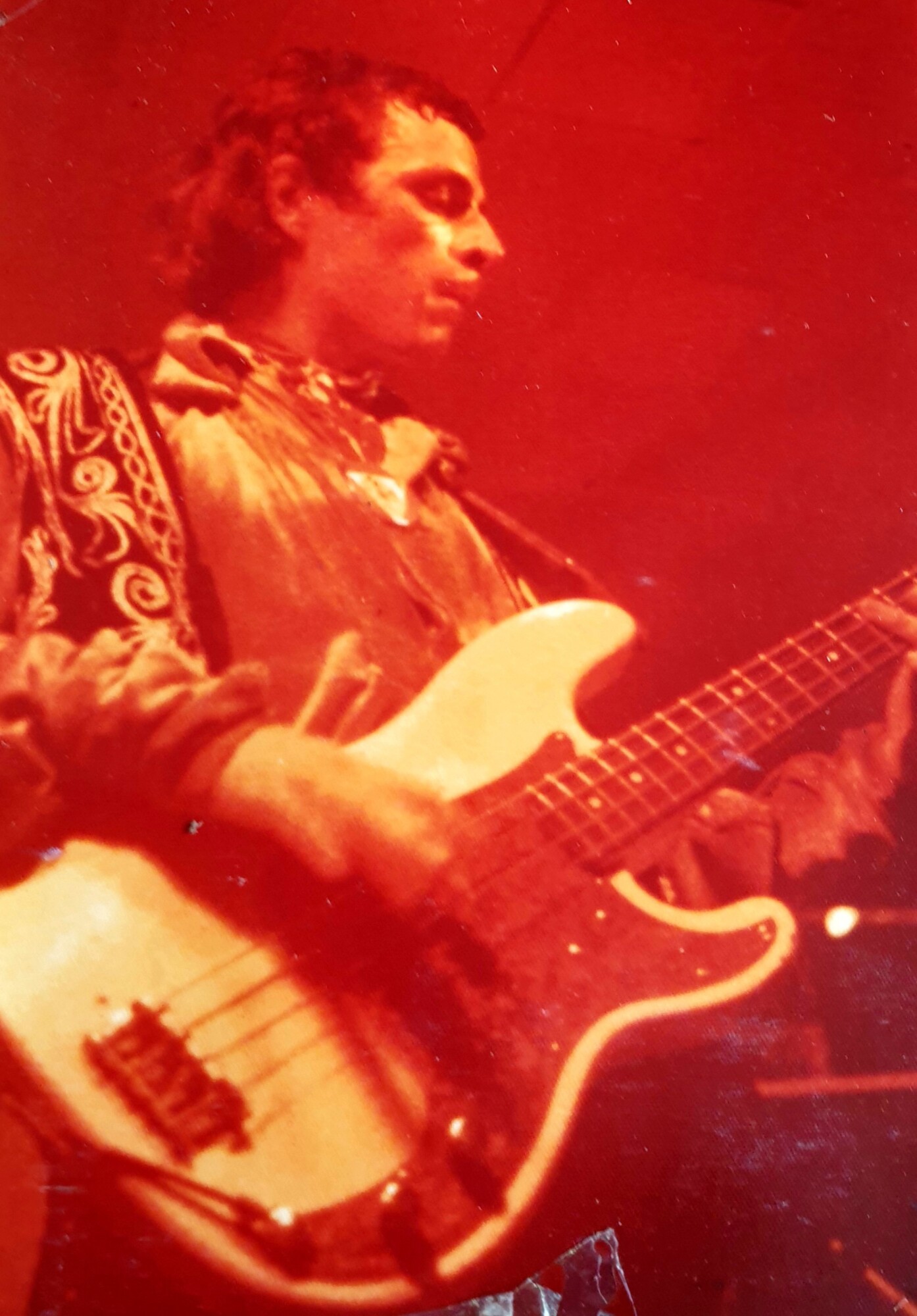
Are there any unreleased recordings in the archive?
As far as our history goes, not really – but I’m trying to get ‘Fantasy Shift’ and ‘Theatre’ remastered for CD release – possibly as one album – I get an awful lot of requests for that – but with the cover (for ‘Fantasy Shift’) that we wanted, rather than that awful cover it was released in! However, the current lineup is halfway through a new album, and that’s what I’m currently focused on, and what excites me the most…
What currently occupies your life?
Getting the new album finished and released!
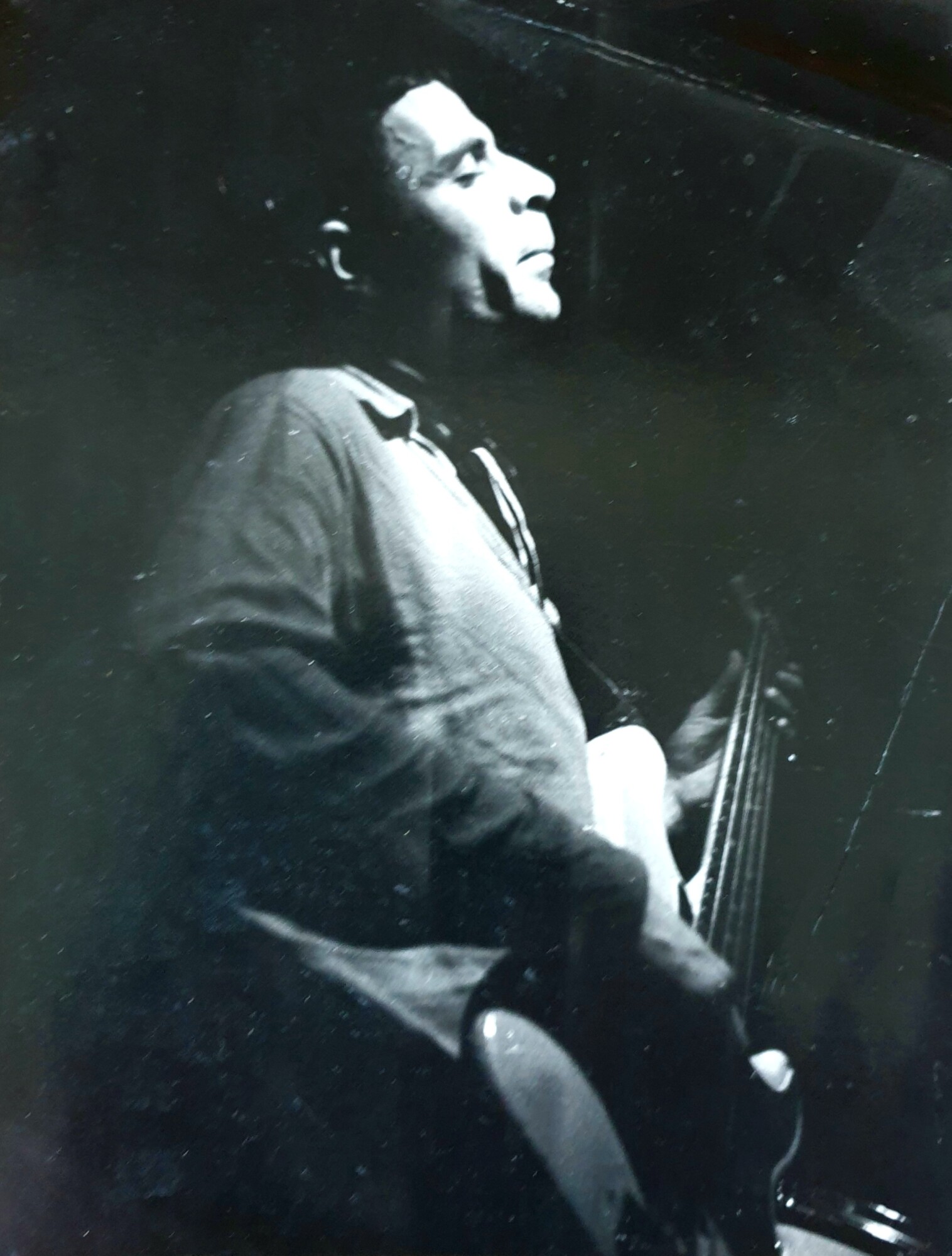
Thank you for taking your time. Last word is yours.
This band – Here & Now – has been the major work of my life, and I hope – and strongly believe – that we’re still true to our original raison d’etre, which has always been to produce the most spiritually uplifting and mentally subversive music that we possibly can… This world is full of political corruption, misery and negative spiritual influences, but it is still a beautiful place, with some beautiful people in it, and it is our continuing desire – and life’s work – to reinforce, and hopefully add something positive, and hopefully beautifying, to this life… Thank you for the opportunity to spread the word – your intelligent and probing questions were a joy to answer!
Klemen Breznikar
Headline photo: Here & Now (Paris, 1976) | L-R: Paul Noble(synth), Keith Tha Bass, Steffy Sharpstrings, Kifkif Le Batteur is hidden
Here & Now Facebook

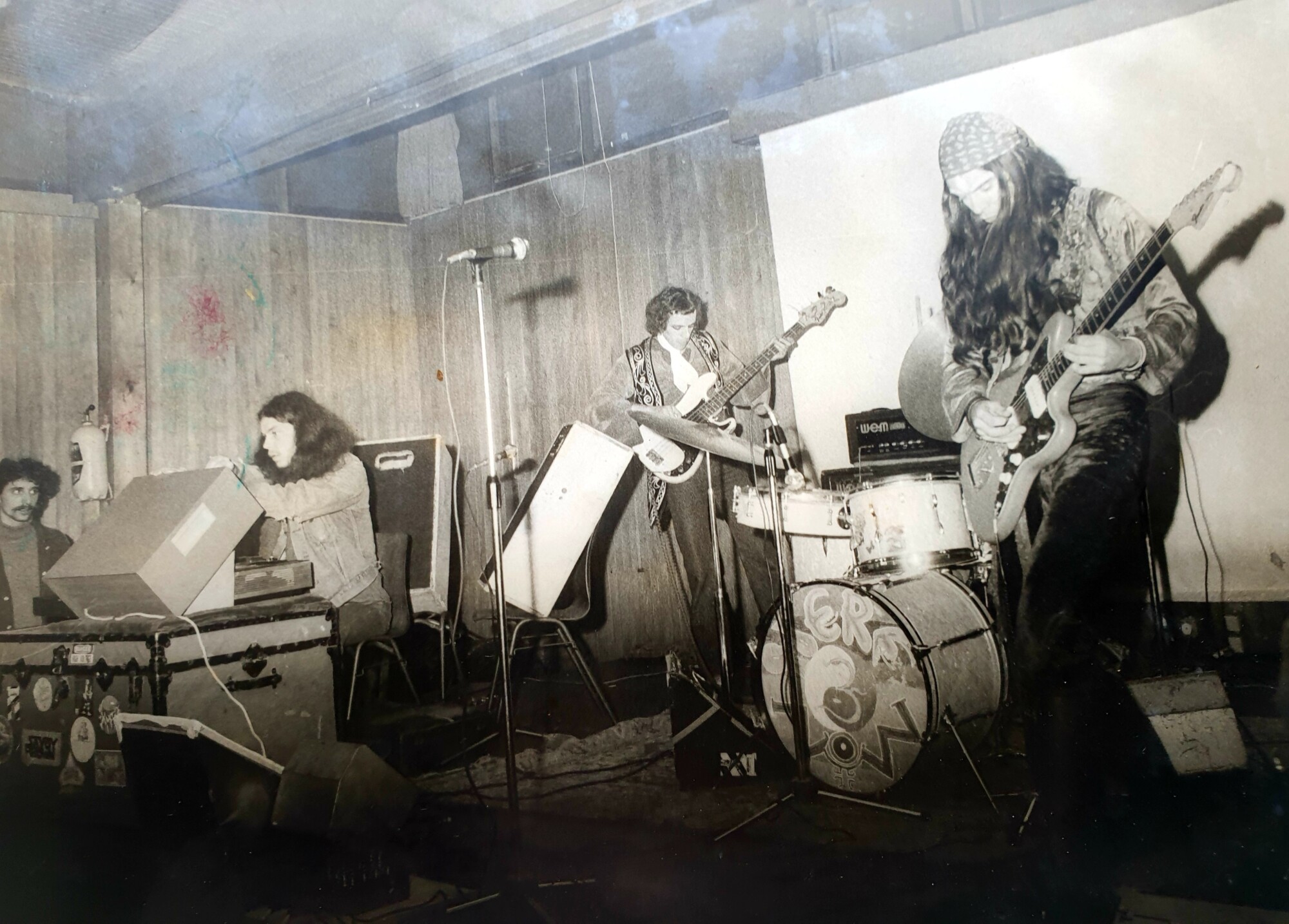
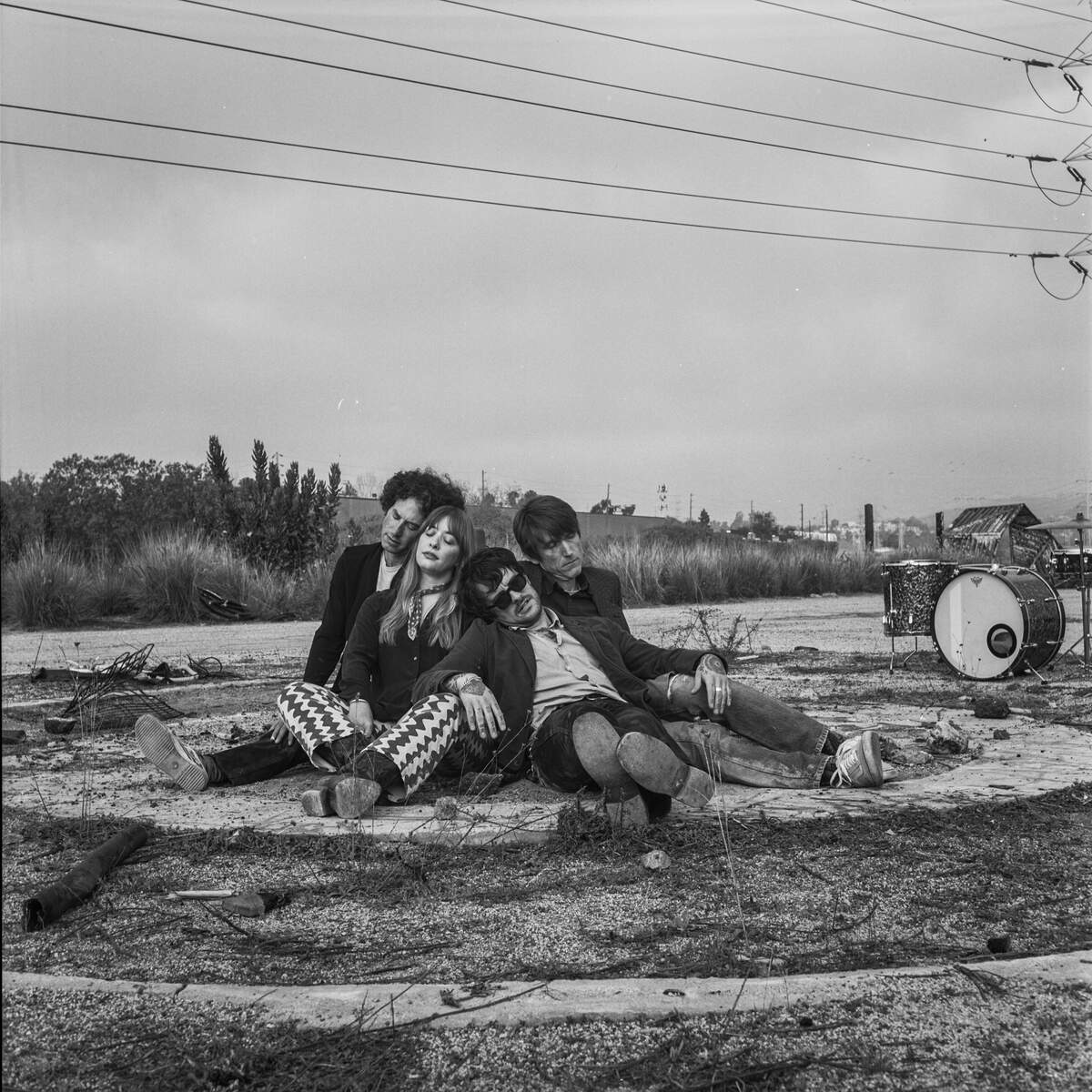
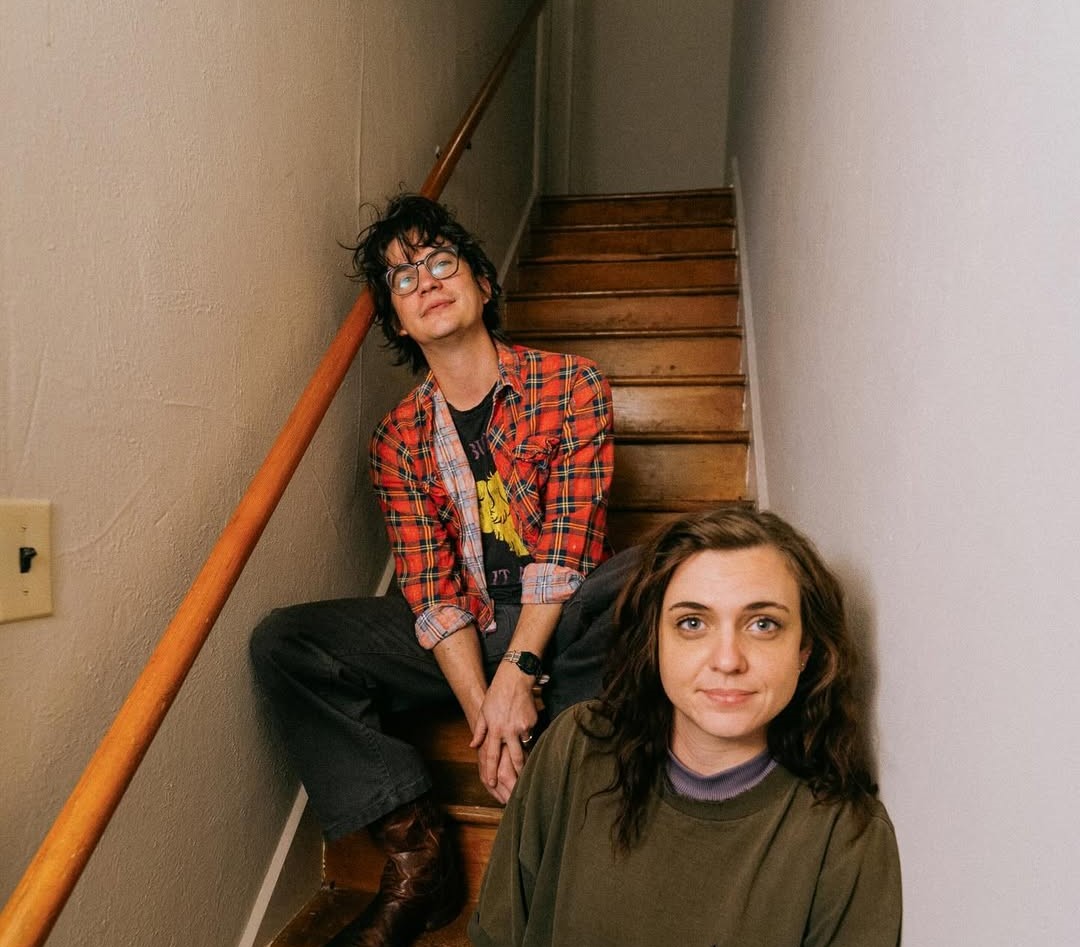
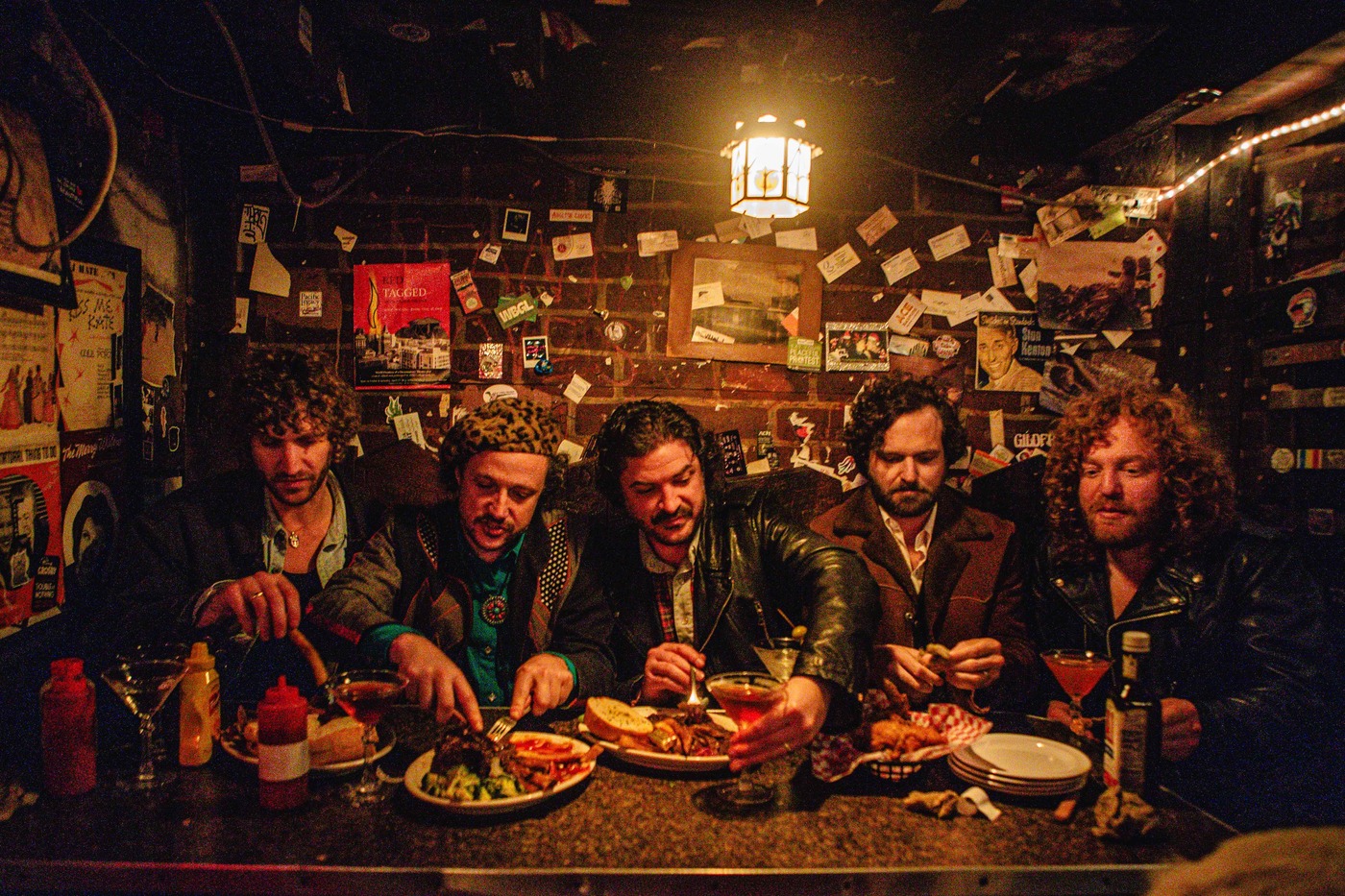
A couple of the photos (eg. The one with them stood in front of the red bus with hands on heads, show Here and Now with Alternative TV. Mark Perry has the badge on his lapel. The second photo shows both bands in front of the stage Mark Perry 3rd from the left again with a lapel badge. The back of the What You See Is What You Are album has a similar photo.
I saw them on the joint tour and attended because of ATV but enjoyed H&N enough to go see them again a couple of times (one time at Fforde Green in Harehills, Leeds)
Lovely full article Kieth. Shame neither Jeza nor I ever get a mentch in any of these stories. I’m the blurry one in the drivers seat in the bus fotoz. But considering I played & of course lived with you in France on the Floating Anarchy Tour, & also at Deeply Vale, Stonehenge, Trentishore etc. As well as H&N
& Phantasy Circus often playing together on the same gigs. So shame we’ve been deleted from your version of the history, but still enjoyed it all anyway, even without credits for my micro claim to fame.
Luvs ye
Fascinating,documented history : his story > thanX,Keith …Onwards & Upwards in rhythm,always.